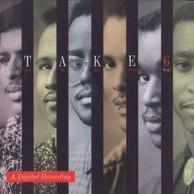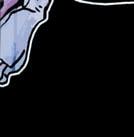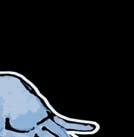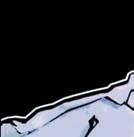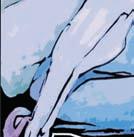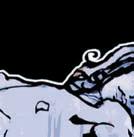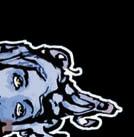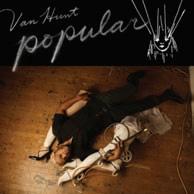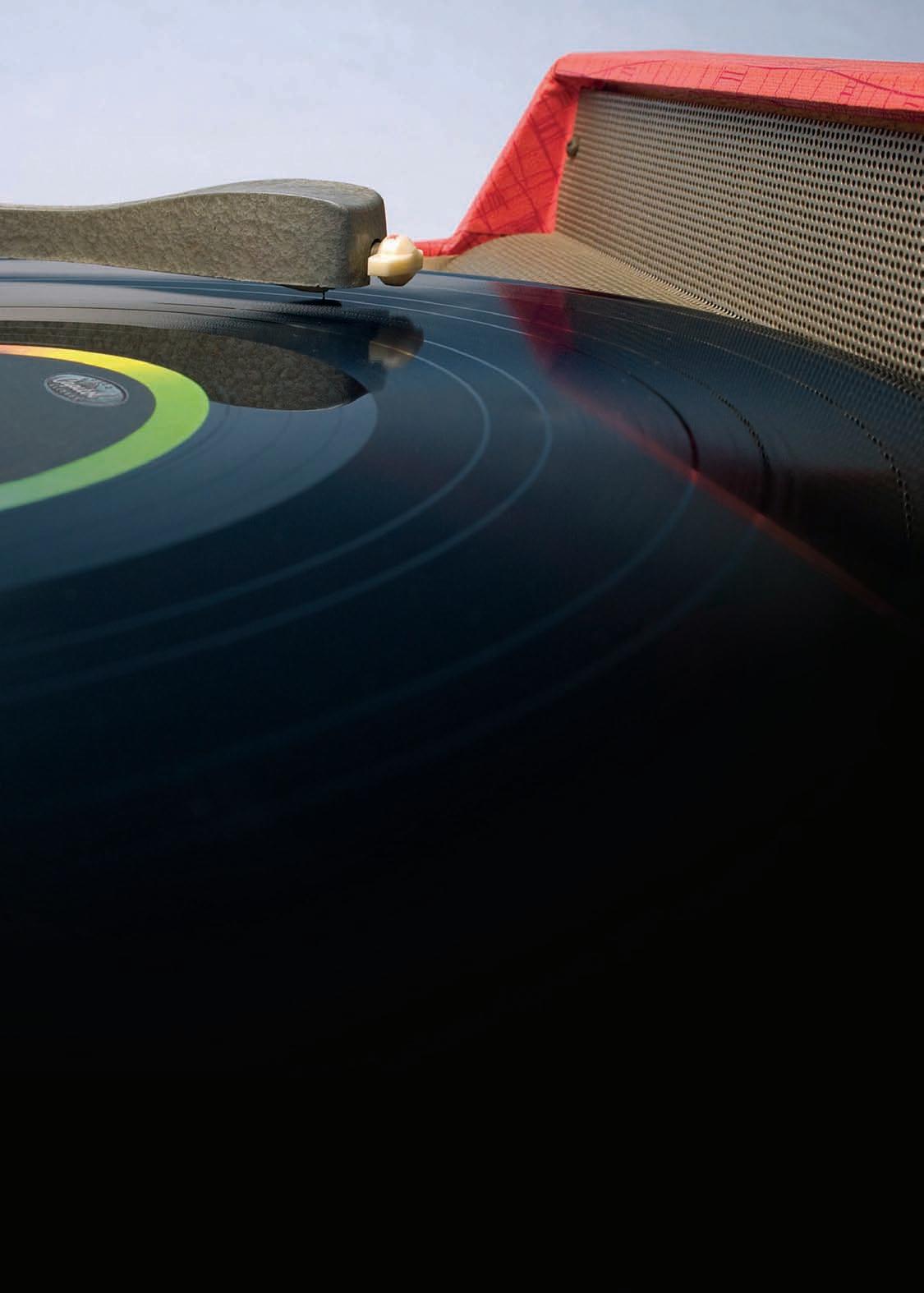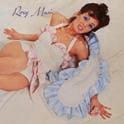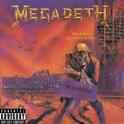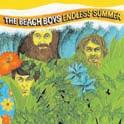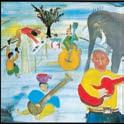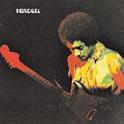roy shirLEy
1944–2008
Rocksteady Soul



text David Katz photography David Katz Archive courtesy of Roy Shirley

Roy Shirley, who died of a heart attack at age sixty-three on July 17, was one of reggae music’s most individual performers. Often employing a quavering vibrato while garbed in unusual attire, Shirley has also been credited as the first rocksteady vocalist, his later hits of the 1970s leading to his coronation as “The High Priest of Reggae.”

Raised in Trench Town by his mother and stepfather in a community centered on a Revivalist church, Shirley received little formal education, due largely to physical mistreatment by some of his teachers. But as his mother is said to have the gift of prophecy, being able to see into the future, he received a spiritual foundation early in life. He also began singing in talent contests at a young age and was given early encouragement by Jimmy Cliff, who introduced him onstage at one of his first live performances. Although his first recordings, for producer Simeon “Little Wonder” Smith, were not released, a ballad called “Shirley,” his debut for the Beverley’s label, was a local hit in 1965.
Shirley then formed the Leaders with Ken Boothe, Joe White, and Chuck Josephs, but their recordings for Federal failed to impact. He subsequently joined the first incarnation of the Uniques with Slim Smith and Franklyn White, recording for Sir J.J. and Caltone.
Left alone when the Uniques temporarily disbanded, in 1967, Shirley crafted the unique and influential “Hold
Them,” named by many as the first rocksteady song. Cut at the first session funded by aspiring record producer Joe Gibbs, “Hold Them” ushered in the rocksteady era and brought Shirley to the attention of audiences outside Jamaica. Shirley then helped Bunny Lee enter the production arena, voicing the hit tunes “Get on the Ball” and “Music Field” at Lee’s first-ever recording session.
Frustrated by a lack of proper financial recompense, Shirley later formed the Public label to issue self-produced tracks such as “Prophecy Fulfilling,” “Flying Reggae,” “A Sugar,” and “On Board,” using Soul Syndicate, Peter Tosh, and the Barrett Brothers from the Wailers band for musical backing. Around the same time, Shirley also worked with Lee “Scratch” Perry, who arranged “I Am the Winner.” But it was Shirley’s 1969 version of Ben E. King’s “Heartbreaking Gypsy” that proved perennially popular.
Shirley first toured the United States in 1971, where he enjoyed a weeklong residency at the Apollo and performed at Madison Square Garden. He then toured U.K. the following year with U-Roy and Max Romeo, but this extended absence from Jamaica caused the Wailers to break the lock on his downtown Kingston record shop, taking over the premises by force. In the U.K., Shirley was featured in the mid-1970s television program Reggae in Britain, backed by Rico Rodriguez’s band, and appeared at the 1982 Reggae Sunsplash in Jamaica. Although based in the U.K. since the late 1970s, where he would go on to establish the British Universal Talent Development Association to support disaffected youth, Shirley continued to produce new material and to regularly perform in Jamaica, Canada, and select cities of the U.S., his final performance taking place at the Sierra Nevada World Music Festival in June. He will be remembered by all who knew him as a kind soul whose outlook on life matched the uniqueness of his musical creations. .

32
brookLyn hooks
The Menahan Street Band’s melodies find their way back home text David
Ma photography Matt Rogers
There’s a photo on display at Public School 20 in Clinton Hill, Brooklyn, showing a group of kids holding 45s, posing proudly on their school’s front steps with a local music ensemble. The musicians are the Menahan Street Band, and the kids, the 45s, the photo itself, all reflect a charming run of events.

“Menahan Street Band began ’cause we’re all friends who are in different bands and were touring separately all the time,” explains Tommy Brenneck, bandleader and producer of Menahan Street Band. “We wanted to record instrumental tracks that were just for us, you know, beats that we thought were dope. And over the course of about three years, we’d lay down tracks whenever we could to make these songs.”
Tommy’s all-star crew-members of El Michels Affair, Antibalas, the Dap-Kings, and the Budos Band-quietly pressed “Make the Road by Walking,” a 45 released in early 2006. A phone call would give the song unimaginable exposure. “The single we put out was on Dunham, which is a label I started specifically for this project,” expounds Tommy. “Exactly one year later, October ’07, we got a call from Roc-A-Fella Records asking for us, because the song had been sampled by Jay-Z and needed clearance.” The HitmenSean “Diddy” Combs’s longtime production team-had lifted the song and gave it to Combs, along with other beats, for consideration. Combs passed the beats to Jay, who apparently dug Menahan’s bold horn lines.
“We had a meeting with Jay-Z and were told it was for the American Gangster soundtrack,” Tommy continues, still seeming genuinely surprised. “They also told us it was gonna be his next single! We didn’t believe ’em. We thought they
were saying that as a bargaining chip for leverage,” he laughs.
“Sure enough, three weeks later, it was on the radio all the time. Of all the music we’ve made through the years, this was Jay-Z’s single on his comeback album? We were psyched. It was unbelievable and kind of still is.”
Jay’s track, “Roc Boys (And the Winner Is…),” ran across airwaves worldwide and boomeranged back to Brooklyn where an elementary school principal noticed it. The principal, Shawn Keaton, was besotted by the horn-laden track and its raspy groove. Then came another random call. “Shawn’s kind of a young principal, and had heard Jay’s version, so he did some research,” Tommy explains. “He called us and invited us to come down to his school and watch his fourth- and fifth-grade [music] students perform ‘Make the Road by Walking.’ ”

Everyone involved in the song attended the recital. Having Jay-Z reinterpret the track was admittedly thrilling, but seeing kids play the original composition, exuberantly as they did, was humbling. “I remember being nervous for the horn player for when the horns dropped,” says Tommy. “I remember seeing little clarinet players covering this song we wrote in my bedroom. The trumpet player pounded his heart and gave a peace sign after the performance—the dude was so proud. I was on a high for, like, a week.”
The band revisited the school a few days later, talking and answering questions and jamming with the kids. “They treated us like we were rock stars,” Tommy says warmly. “The path of the song, making its way to Jay-Z, then the world, and back to these kids is amazing. We gave them some 45s that day, and we all went outside and took a group photo together. It was all so positive.” .
34
cLassic cuts
J.Rocc lets his fingers do the rocking text Ronnie Reese photography B+
After I interviewed DJ Rhettmatic for the Record Rundown in Wax Poetics Issue 22, he mentioned being clowned by fellow World Famous Beat Junkie J.Rocc for exceeding the normal ten-album “limit.” Although there really is no limit to the number of selections an artist can make, Rhett’s sixteen choices set a record that stands to this day. When I ask J.Rocc not to go the same route, he answers slyly, “I’m not going to do that. I might just give you one.”
But one won’t do for the Bridgeport, Connecticut, native. “I started DJing as soon as I heard ‘Rockit,’ ” J. recalls, echoing the words of nearly every leading second-generation turntablist, evident in a scene from Doug Pray’s 2001 Scratch documentary in which a litany of DJs cite Herbie Hancock’s seminal 1983 recording as inspiration for their careers. “As soon as I heard ‘Rockit,’ and as soon as I saw the back of Malcolm McLaren’s D’ya Like Scratchin’ album, I was trying to scratch. We were trying when ‘Planet Rock’ was out. We used to think it was like rubbing two cartridges together…we didn’t know what the hell scratching was.”

When it comes to records, J’s story begins with hip-hop. Pops would take the young Beat Junkie to warehouses and outlets like Music Plus to scour the bins for 45s and anything Parliament-Funkadelic related. “I went to those spots so much that I knew the days when the shipments would come in,” he explains, in true vinyl-nerd fashion. Once old enough to drive, and now living in Orange County, California, he hit the streets of Los Angeles to dig at stores like Rage Records, which was hyped on 1580 KDAY-AM. KDAY’s Mix Masters were a major influence, along with DJs at KACE and Uncle Jamm’s Army of DJs, which included Chris Taylor, Egyptian Lover, and Battlecat.
Today, J.Rocc is one of many in-house DJs at Stones Throw Records, where he is finishing a solo album and traveling the globe, playing as much James Brown as crowds will tolerate. It would have been interesting to hear him wax poetic on just one LP, or even expound to the lengths of Rhettmatic’s sixteen, but for a man who speaks best with his hands, these ten gems are more than enough to satisfy.
Five Fingers of Death Turntable Talk megamix
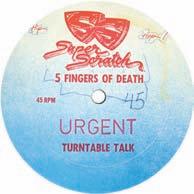
(Super Scratch) 1984
Turntable Talk is basically an old DJ record, like a four-track mix. As far as I know, it could be Dre, because Dre at the time was the only one running around doing “[Please] Mr. Postman” over electro beats. It’s like the old New York Scratch Masters—just a one-sided record with a seven- or eight-minute mix. This one has mostly upbeat stuff like “Take Your Chance,” “Planet Rock,” “Hard Times,” and “Mr. Postman,” which is actually over Jive Rhythm Traxx.
M.C. Mitchski “The Rappin’ Comedian” and M.B. “The Human Radio” “Brooklyn Blew Up the Bridge” (Ski Records Co.) 1987
This is, like, a five-track EP of what I used to hear on my tapes of The Red Alert Show. Of course, “Red Alert Is a Great Man,” they used to play that all the time. And “Brooklyn Blew Up the Bridge” was during the Queensbridge and the Bronx battle, trying to cash in on the KRS-One song. This is one of my favorite joints from that time. It’s a record that never came out here to the West Coast, but is definitely one of my top joints ever. I finally found it in Japan.
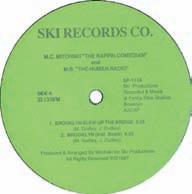
37
Divine Force “Holy War (Live)” b/w “Somethin Different” (Yamak-ka) 1987
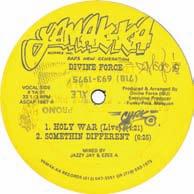
I think this is on that Ego Trip comp that came out a while ago. It’s definitely one of those classic New York joints. I don’t even know what year—’87 probably. This is another one I used to hear all the time on my Red Alert tapes. Those were the tapes that made me want to get more hip-hop records. I was so stuck on West Coast [hip-hop] and faster beats that when I would hear this stuff, it was a new thing. “Holy War” is definitely one of those joints. I was hooked on it.
Jack Bruce Things We Like (Polydor) 1970
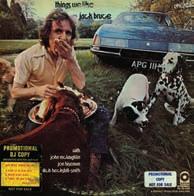
This is jazz-rock. It’s got some classic loops, like Showbiz and A.G.’s “Represent.” I had heard about the album and was like, “Oh word!?” It’s one of those albums that I had been looking for. Of course, I couldn’t find it in a record store by my house, but every once in a while, I would hit the college stations where I used to live and do a radio show. They would leave me alone after my set, and I would go through the records. I just happened to go on a college-station jacking spree, and they had it there.
James Brown In the Jungle Groove (Polydor) 1986
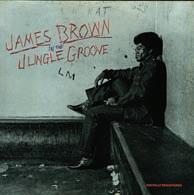
This is, like, my joint. Period. I can take this anywhere with me, and I’ll be all right. I can be DJing somewhere, and give me doubles of this, and I can go for hours. It’s definitely one of my joint albums. I could pick a million James Brown albums, because he’s got a lot of them, but this right here is the one I’ve got to have. It’s just a DJ record, and it’s got everything: double vinyl, loud pressing, “Funky Drummer,” “Give It Up or Turnit a Loose,” “Talkin’ Loud and Sayin’ Nothin’.” It’s one of the records I’ve got at least four copies of. Everywhere I see it—the reissue or the original—I buy them all.
Slum Village “I Don’t Know” (Sudden Impact) 1996
This was my first time really hearing Slum Village. I was hip—kind of—to it, because C-Minus had the Fantastic Vol. 1 joint on cassette, and then Rhett came back from Japan with this. It was so new, no one was really trippin’ on Jay Dee yet, so they were like, “Here’s twenty test pressings and a couple of copies of the real thing…try and get the word out.” Rhett sat on them for a good month before he even let anybody have it, because—and I hate to say it—I don’t even think he was trippin’ on it. It was just so different at that time. I remember bumping the tape, and Rhett heard that song and was like, “Man, I got that 12-inch.” I was like, “12-inch for what?” Sure enough, he came over the next day with doubles for me, and I was like, “Dude, you been sleeping on this the whole time!?” He was like, “I didn’t know.” And ever since then, we were killing that song. We were the only ones that had it out here too? We killed that song in L.A.
Atmosfear En Trance (MCA) 1981

This is a British soul group from the ’80s, and “Dancing in Outer Space” is this classic track that was played in all the house clubs and all that. It’s a more R&B/boogie/funk type of album, and not even “funk” funk, but ’80s funk. Peanut Butter Wolf and Madlib put me up on it, and this group right here opened up doors for me to try and find out more about the British funk scene. There’s still a lot I don’t know about it, so every once in a while when I go out there, I find a couple of discs here and there of some shit I’ve never heard of. There’s something from this one group, Funkapolitan, that I’m still trying to find, called “As Time Goes By.” It’s another one of those British jams that Wolf put me up on.
“Pretty” Tony “Get Some”

(Music Specialists) 1985
I got to have a little electro on my list. I could go all day with electro joints. This is just one of those Miami joints from ’85. It’s one record that stands out to me that didn’t sound like everything else that was coming out around that time. He was doing “Jam the Box,” and Freestyle, and stuff with Debbie Deb and Trinere. That was the highlight of his career right there, around ’85 and ’86, when he was coming out with hits left and right on the electro house party scene. When I finally found this, I was like, “Doubles!” This is a popular joint with me, and it’s one of those random hip-hop joints, because it’s not something that everyone’s yapping about.
Tim Maia Racional Vol. 1

(Seroma) 1974
This is from when I first went to Brazil. It’s the one that brings back the memories. There’s a track called “You Don’t Know What I Know,” and it’s only, like, thirty-four seconds, but it’s this a cappella song that’s just him singing about silly stuff. We would sing this song all day—me, B+, Madlib, Egon, Cut [Chemist], everybody. B+ already had it, because he had gone out there before and come up on, like, four boxes of records and made CDs of all the stuff he found. I think this came from an outdoor swap meet where they had volume one and volume two hanging up. I was like, “Tim Maia! I’m actually doing some damage now. I’m stepping my game up!”
It’s not just a Sergio Mendes album, because I had all that. We cleaned up out there. I know the prices aren’t the same because of us. We went out there and acted a fool. Records will do that to you.
Latin Rascals Big Apple Production Vol. II
(J&T Records) 1984
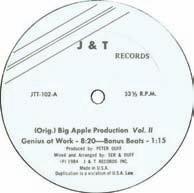
This is a representation of what I was listening to growing up. It’s just one big mix. I love edits, but sometimes it’s dope when it’s mixed, and, at the same time, this has all the hits from that day. Some of them I’m not too fond of, but this is actually one of the records the dudes on KACE would play. They would do their own crazy little mix, then throw in one of the songs that ended that mix, but it was really this record they were playing. I’d be thinking, “These guys are killing it tonight…they’re getting busy!” But it was definitely a record. I knew that probably, like, three years later when I finally got my own decks. This was a record that made me want to DJ. Whatever those guys were doing, I wanted to do. .

38
Mikey Dread was one of those unique artists that Jamaica produces every so often—his musical creations and nonconformist personality indicating a man cut from a different cloth. The individuality of his approach resulted in some of the most notable works to surface during the late 1970s and early 1980s, particularly where dub was concerned, and during those heady, short-lived days of the reggae-punk alliance, Dread was the reggae figure who most succeeded in stimulating interest in Jamaican music among a new set of overseas fans. Throughout his thirty-year career, Mikey’s intense live performances were also highly rated, and rightly so, as he always went that extra mile during fierce stage workouts that often lasted several hours, putting his band through the paces to make sure that every show was uniquely captivating. I can still remember the first time I heard African Anthem: The Mikey Dread Show Dubwise, whose nonstop mix of cartoon noises, haunted-house shrieks, and zany percussion made Joe Gibbs’s African Dub Chapter Three sound like an acoustic set from Peter, Paul & Mary. Better still were the dub B-sides of singles issued on his Dread at the Controls label, such as “Robbers Roost,” the electrifying flip of Edi Fitzroy’s wonderful “Country Man,” or “Internal Energy,” the delay-drenched dub of one of his earliest singles, “Love the Dread,” not to mention brilliant extended mixes of Junior Murvin’s “Bad Man Posse” or Mikey’s own “Roots and Culture,” with its killer dub, the horns-laden “Jungle Signal.” And he kept the music coming long after his heyday, with postmillennial recordings such as Rasta in Control and Life Is a Stage, which maintained high standards in an era of half-baked fakery. All of which made the news that Mikey had succumbed to a brain tumor that much sadder, though the odds were certainly not in his favor when

the diagnosis first came last summer. He was born Michael Campbell in Port Antonio in 1954 on Jamaica’s northeast coast, where his mother came from. But as noted in the autobiographical “Dread Combination,” his father hailed from further west, so he spent formative years in Negril, returning to Port Antonio at the age of twelve. “Inna those days, people don’t have no one job unless you are Chinese or some business people,” Mikey said of his parents’ vocations. “Everybody else had to do multiple things to survive.”
Mikey’s enduring love of music began at a young age, and an early aptitude for electronics saw him running the radio station at Titchfield High School, then the only school in Jamaica awarded a broadcasting license. “Me live with me parents down in Negril for a while, and that’s how I really grew up,” he explained. “It’s from while I was in Negril that my interest kind of materialized for electronics, and make me become very aware about the power of electricity and communication. Then me just go back a Port Antonio without any friends, and me have to just go straight inna school, where me don’t know nobody. Me start play radio station at Titchfield High School, because we had a license, so we had, like, a fivemile radius for the radio station. Me run it, like when we’re in class—we just put on a LP, and we have a [record] changer, so when one LP done, it drop down, and the next one start play. And we used to jam the [other] radio [station frequencies], because the rich people carry their kids to school driving in the car, listening to RJR.1 So what me do, me just change our frequency to RJR, so if they come within five miles of the radio station, your radio just switch to me; when you ride into school and you hear some rub-a-dub inna the morning, you

43
Photograph by Dave Hendly.
The electric Mickey Dread tapped reggae’s unique frequencies text David Katz
wonder what’s going on. Everybody knew me and this dude named Jeff; there was two of us in school that used to MC all the school functions and concerts, because we wanted to get into broadcasting, so we were the two people who always do them kind of thing there. The only difference with me now is, like, me always perform a tune as well, like a Big Youth tune, ‘S.90 Skank,’ or something else that current.”
After thus taking the microphone at school functions, Mikey also became involved with local sound systems Safari and Sound of Music. “Me a go school while me a play sound,” Mikey explained. “Me inna me teens when me a play sound, because after me go Port Antonio, overnight, I start to get my head together. I was a student always into the sciences and mathematics and physics, so you find because of what I wanted to do, I lead meself to that, and I go a library and read a whole heap of stuff, just out of curiosity. And me develop a certain love for broadcasting later on in life with the sound-system thing. My friend Howie work for the telephone company and him know electronics, so him always have some sound, and we play the sound anywhere—I don’t see back my house for weeks. They never want us to leave, just give me a house and food and everything, ’cause me a play some dangerous tune, like ‘Satisfaction’ by Carl Dawkins, and ‘Tell Her You Be Sorry’ by Freddie McKay.”

Campbell moved to Kingston during the mid-1970s to study electrical engineering at the University of the West Indies. “Me go to town when I-man go to a college, the College of Arts, Science, and Technology,” he explained. “Me live in Mona,2 because me have to board, so me have to find somewhere close to school—you are on a student loan, and you no have no transport, so you need to be near school. The farther you are from school, the cheaper it is, but the bus ride is questionable. My brother used to live in town, but he a live fi him life, and I live my college life.”
Soon Mikey began researching reggae history for a mandatory English essay and was introduced to influential music figures by his old friend from Port Antonio, singer Watty Burnett of the Congos. “That time when I am at school, I have to write certain research papers in English,” he details, “and I did mine on reggae. So I interview almost every man who existed at the time. Me interview every man ’pon Idler’s Rest3 and every artist. So, by that time, me start to know all the producers through Watty Burnett, who’s also from Port Antonio.”
Links forged on the music scene would later prove invaluable once Mikey began voicing material as a deejay.
First, however, came Mikey’s revolutionary input in Jamaican radio. “School children all over Jamaica are always fascinated by how they hear people on the radio, how they hear music play,” he continued. “So one of the main things every school does is carry you to the Gleaner Company to see how the newspaper is done, and take a tour of King’s House4
and the radio station. I see the man talk at the radio station, and I was fascinated by it, so me talk to them about the job. And then, years later, me come back to the same job, because I wanted to do electronics engineering [at college], but they never offer that, they only offer electrical and mechanical. And I had no interest in mechanical or electrical, but I still had to study it. Them never have nothing fi what me really want; them do three-phase power building, like how to install an elevator, something what me no really into, as I feel that is already a stagnant, dead industry, and I want to get into an industry that show development. To me, at that time, electronics show development, because I could compare the old-time radio, which is like the tube radio, till, inna my time, comes transistor radio—you can pick it up and walk with it, go a seaside, or inna the hills or whatever. And the tube [radio], you have to be plugged in, and you have to stay round them. Anyway, eventually I apply to RJR, RJR turn me down, saying I was too qualified, and me never understand that, like the man them no want to give me a chance. When you’re a young, smart Jamaican, they didn’t even want to give me a break. They just say, ‘Sorry,’ and turn me down. So me go a JBC5 and meet some people, a guy named Ossie Harvey, who was a popular technical operator. Because, back in the days, radio had two different sections, with a booth for the announcer, who faces the operator through glass. Radio in Jamaica was not like one man spinning the music, playing commercials, reading the news and the weather and talking. Radio was divided up into different departments, so me have a talk-back [button], whe’ me can talk to the announcer, and he can talk to me. I sit at the control, and I control him: if I turn his mic on audition and turn the board on audition and I’m playing strictly rub-a-dub on the next side, he don’t even know the difference.”
Mikey was thus hired as an apprentice at JBC in 1976, but was soon promoted to other duties. “I was supposed to be a trainee for a while, which was ironic,” he said, “because in Jamaica, within them time there, there was a lot of prejudism because of how black your skin is. So that force man like me, who is well Black, to really excel inna whatever I-man doing in terms of academics. Me can see a next youth, through his father [who] is Chinese—they will say he can get a job at the airport, but me must work inna one sugar factory. Me still have that vibes about me, and me no like how life treat certain people. My job was to go to JBC and learn, so me learn from some of the pros at the time, and it was supposed to be six months before I go into the field as a transmitter engineer, but, within six months, I realized that I can take this to a next level. Number one, on the town, I don’t have a lot of friends to hang out with on weekends, so my nights are free. Number two, JBC sign off at midnight, and I feel the kids from school were up studying until late night, so we wanted something to
44
Photograph by Bob Leafe/Frank White Photo Agent.
keep us company on campus: some man a play some U-Roy tapes, some man a play some Tippertone tapes, some man a play some Tubby’s tape. It’s like every man a listen to some rahtid thing, so when me leave, me done tell them man long time ’pon campus me going to go down and go change this, and me really humble myself and learn the ropes. And me tell Ossie Harvey and another man named Mr. Linton, why them never go twenty-four hours? Them say, ‘Boy, nobody listen to the radio after twelve o’clock.’ So, through me’s a country man, me tell them I would like to do a little thing a nighttime, and them say, ‘We’re going to give you this thing, because we like what you’re doing, but you would have to come a work on Saturday night too.’ I normally would have two days off, Saturday and Sunday, work Monday to Friday, but they said, ‘If you can dedicate every Saturday to this, then me give it to you.’ So me take it, but me had to give up a day off. Now and I only have Monday off, so now me just choose fi just work. And me and a girl named Freddy Rodriguez always do a little program; she used to be the announcer, and she was a nice, sexy announcer. So the JBC thing develop, and then Freddy Rodriguez, me and her would select from what the library had. And she would have other music she want to play, but when she left, I just bring in my record box and my dub plate. From I did my research from college, me already knew all of them man who saying anything in reggae. Me know where to locate every man, and me know what them a deal with.”
As Mikey was not allowed to speak on air, he mixed his show to be a seamless blend of back-to-back reggae, punctuated by bizarre jingles and over-the-top sound effects. At the time, Jamaican radio was heavily dominated by foreign pop music, so Mikey’s show caught on like wildfire and truly revolutionized its airwaves. Custom mixes provided by Lee Perry, King Tubby, and Joe Gibbs also boosted its popularity. Indeed, Mikey’s most important link was made with Tubby, the masterful recording engineer who encouraged him to begin voicing original material after noting Mikey’s talent on the mic and general intelligence. One of the earliest singles to feature his voice, the humorous “Barber Saloon,” was a local sensation due to Campbell’s clever lyrics and individual delivery, while a follow-up called “Love the Dread” was an equally popular single which led to his enduring stage name, although he did not actually wear dreadlocks until considerably later. Other early singles cut for Lee “Scratch” Perry, Sonia Pottinger, and Joe Gibbs helped establish his reputation on the Jamaican music scene.
“Me do a nice LP for Scratch,” Mikey insisted. “Scratch was one of my heroes too, because there was a song by Scratch I used to play on Radio Titchfield called ‘Blackboard Jungle,’ and ‘Cloak and Dagger Dub.’ That draw me to Scratch, but me never really meet Scratch until after me meet up with the Congos and start play a lot of Scratch music on my radio
show. And Scratch make some exclusive dubs, some Bob Marley remix and some specials, like ‘Row Fisherman,’ most of the Congos tunes. And then me and Scratch start doing some recording together. After a while, me just start play a whole heap of Lee Perry everywhere, every time. And Scratch was always cool with me. Scratch is magical at what he does— Scratch would be standing, or he’d just be leaning up on a high stool, but Scratch is not an engineer that sit down on the left-hand side of the board, stretching towards the right-hand side. Scratch is all over the board, skanking and doing him likkle things with him echo and extra special effects. Whereas Tubby would have somebody else mixing, like Jammy. You could only get Tubby to mix on certain projects, if he feel like it. And Scratch get the best of Mikey Dread. Me make some tune with him when me really fresh, because every morning me leave JBC and reach home by six o’clock, and Lee Perry’s there, at my home. And him gone with me for the whole day until it’s time for me to go back and work the night. Him get a lot of good things, because him always have some great ideas. And me and him never had a problem, because the man is a genius, and I could recognize it, because I come from a different academic school.”
Mikey’s own recordings and such exclusives gleaned from Jamaica’s top producers gave the Dread at the Controls show a perpetual edge. But despite the immense popularity of the program with the Jamaican public, as well as it being a source of fascination for overseas listeners who obtained copies on audio cassette (including British DJ David Rodigan, who became Mikey’s pen pal), the program was eventually deemed too wild by the station management, leading to Dread’s resignation in 1979. “When I was on the radio, I was a VIP in big, bold capitals,” he emphasized, “because the people recognize that I am the man defending the culture of the country. And I move it to every house and every car and everywhere. Bob Marley a take the music to the people on tour, but at home, I was the one running things through the media, and the media take it to the world. If Jamaica was still fighting against the music, only a few reggae [acts] would escape outside of that. So me started from the foundation, and make sure when it lick that transmitter, that sound gone! To Cuba, Trinidad, and everywhere. When me travel and me meet people, they say, ‘Boy, we always a listen your radio.’ Me never know the radio a lick down a Trinidad and all over the Caribbean late night, because late night they have the best reception. Me and the other DJs on the rest of the stations at nighttime were the ones the people could listen to, so my job and my whole kinetic intervention in the whole reggae thing is to spread it globally, by the transmission of the energy, seen?”
By the time of his radio resignation, Mikey had already assembled the album Evolutionary Rockers (released in Jamaica in limited quantity), as well as Dread at the Controls,

47
Photograph by Dave Hendly.
which was licensed to Trojan in the U.K. A second overseas disc called African Anthem, issued slightly later on a small independent called Cruise, was a dub album mixed to mirror the style of his radio broadcasts, which proved highly popular with punk audiences in Britain. Mikey also worked as a recording engineer at Treasure Isle Recording Studio before spending increasing periods in Britain, where he established branches of his Dread at the Controls label. He had also been approached by Chris Blackwell, who wanted Mikey to engineer at his soon-to-be-opened Compass Point Studios in the Bahamas, though Mikey ultimately declined that offer. A major turning point was reached in 1980 after Mikey was approached by the Clash, with whom he subsequently toured and recorded, which helped reggae reach a wider international audience. “We do some shows, but that was not an organized thing,” Mikey explained, “because for me to produce them, I wanted to hear or see what it was. In order for me to take a job, I need to know which sort of fans you have, and how does your music go across. I was impressed, but the crowds were spitting at each other. And me really feel sick when me see them still, for me no inna them thing there, but me see what the guys were doing, and we do the work, and it was good.”
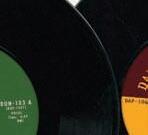



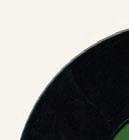





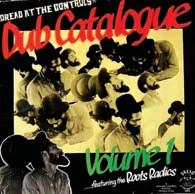

Following his involvement in the group’s experimental album, Sandanista!, which was partly recorded at Channel One Studios in Kingston, Dread began spending extended periods in the U.K., where he attended the National School of Broadcasting, which led to his narration of Deep Roots Music, a sixpart reggae documentary aired on Channel 4 in 1982, as well as his subsequent hosting of the television series Rockers Roadshow, which featured live acts performing in various parts of Britain Meanwhile, in Jamaica, he had produced impressive and individual recordings by Edi Fitzroy, Earl 16, Rod Taylor, Junior Murvin, and relative unknowns such as Michael Israel, the Ovations, and Wally Bucker, as well as his own solo work, which was issued abroad by labels such as Stiff, Dub Vendor, and Rough Trade. Mikey was an early champion of the Roots Radics and was also instrumental in elevating the reputation of Scientist as dub engineer: the combination of these relationships gave his productions of the early 1980s a dramatic edge. His album SWALK, cut in London with U.K.-based

HERE’S SOME SOUL!





musicians, also saw Mikey straying into lovers-rock territory. A later link with UB40 around the time of “Red, Red Wine” resulted in extensive European tours and the laid-back album Pave the Way, which was issued with a dub companion, but his relationship with the group faltered after differences arose over a planned live tour. By the mid-1980s, he began spending increasing periods in the United States, first with a brother in Philadelphia, followed by a number of years in Los Angeles and San Francisco. He settled in Miami in the early 1990s, where he became program director of the Caribbean Satellite Network and studied video production at the Art Institute of Fort Lauderdale.
Mikey once told me he had been summoned to Jamaica to be the program director when Irie FM was being set up, but after moving there, he could not agree to terms and eventually headed back to Miami. There, he was far from idle: he went back to school, completing, with honors, a BA in International Communications at Lynn University in Boca Raton. He also opened a recording studio, where he worked with Soul Syndicate and produced commercials. The entry into his life of Monika, a European medical student who became his wife, brought increased stability. He continued to deliver powerhouse live performances right up until he became ill last summer, which resulted in a move to North Carolina for medical treatment.
Michael Campbell (aka Mikey Dread), vocalist and record producer, was born in Port Antonio, Jamaica, June 4, 1954, and died in Stamford, Connecticut, March 15, 2008. He is survived by Monika, their infant son Zylen Jahlight, and five other children from previous relationships. .
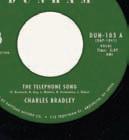


Notes












1. Radio Jamaica Rediffusion, one of Jamaica’s two top radio stations.

2. An uptown district close to the university.
3. The area known as Idler’s Rest was a congregation point for local musicians on North Parade, close to Randy’s Studio. During the 1970s, many Jamaican artists would gather there daily, hoping to be selected for recording sessions.
4. The prime minister’s residence.
5. The Jamaica Broadcasting Corporation, the other big broadcaster in Jamaica.
The Menahan Street Band is a collaboration of musicians from Sharon Jones & the Dap-Kings, El Michels Affair, and the Budos Band brought together by musician/producer Thomas Brenneck. Their debut album, ‘Make the Road by Walking’ will be released on Dunham Records, Brenneck’s new imprint of Daptone Records. Includes title track “Make the Road by Walking” as sampled for Jay-z’s “Roc Boys (and the winner is…)”



Deep in the heart of Panola County, Mississippi lies Como, a small rural town where children and grown folks alike have been living and breathing gospel for as long as they can remember. In the summer of 2006, Daptone Records placed a small ad in local papers and on the radio inviting singers to come down to Mt. Mariah Church to record their songs. The result is COMO NOW, a stirring collection of traditional and original a cappella gospel from the voices of Panola County’s own families.

48 Daptone Record Co. 115 Troutman St., Brooklyn, NY 11206 www.daptonerecords.com
Charles Bradley & Menahan Street Band “The Telephone Song” b/w “Tired of Fighting”
Sharon Jones - Produced by Ticklah “How Long Do I Have To Wait For You?” (Reggae Version)
I’m sitting at a table in a club in downtown Chicago with Larry Coryell in between sets. Wearing a sport coat over a white T-shirt and slacks, the man is holding court but is distracted—mainly by his wife, Tracey Coryell, a striking woman who looks to be roughly half of Coryell’s sixty-five years. He interrupts a comment on his hatred of the Internet to turn and tell her, “Baby, you look so beautiful tonight.”

During the next set, he keeps a clear line of sight from the stage to her and pauses a couple times during his solos on jazz standards like “Someday My Prince Will Come” to make eyes at her. When his drummer and bassist leave the stage for Coryell to go it alone on acoustic guitar, he dedicates a spirited performance of Ravel’s Boléro to Tracey, and she blows him a kiss from the back of the room.
But while his dedication to his wife is made clear, probably few among the crowd of thirty or forty people in this place on a cold May night in 2008 know, or care, that the man onstage is considered one of progenitors of jazz-rock fusion, perhaps even the first on the scene. In 1966, Coryell cofounded the pioneering jazz-rock band the Free Spirits and made his recording debut on drummer Chico Hamilton’s The Dealer. The liner notes state that the twenty-three-year-old Coryell was “an anomaly in that he doubles between jazz and rock and roll. He finds nothing unusual in this. Like many well-known jazz artists, Coryell tends to defy the labels people put on music.”
In 1967, Coryell started a short stint with vibraphonist Gary Burton, recording four albums, the first, Duster, considered by some critics to be the first fusion record. Coryell’s 1972 group the Eleventh House, with drummer Alphonse Mouzon, is still considered one of the stronger fusion groups
of the 1970s. His own solo records show that he never felt restrained by any musical boundaries. By piling wild, psychedelic guitar on top of jazz, pop, and funk, and often singing, Coryell was forcefully making fusion earlier than anybody else. But this distinction is merely academic, particularly to the man himself.
You’re described in the liner notes on the back of Gary Burton’s 1967 album Duster as being in “the vanguard of a young and long-haired generation of musicians, which is breathing new energy—the energy of rock and roll—into the folk music called jazz.”
Was this an early attempt at jazz-rock fusion?
No, it was a jazz group. I was excited that I was gonna do a jazz session. As Wayne Shorter has said, “Jazz means no category.” And about that time, before we were in the studio making that record, a lot of jazz musicians—Don Shirley, Jimmy Giuffre—were doing stuff that was not bebop but was certainly not rock and roll. A lot of it was influenced by folk music. We were focused on the music and bringing new ideas into the jazz pantheon, but, to me, it wasn’t a conscious effort at jazz-rock fusion. Especially because I’m looking across the room at Roy Haynes playing drums, and he played with Charlie Parker, as well as Stan Getz. It was really the last version, up to that point, of the Stan Getz quartet, minus Stan.
I was not a developed musician at that time; I didn’t think I was that great. But I thought I had something original to say, an original voice.
On “One, Two, 1-2-3-4,” you and Steve Swallow are soloing in tandem; he’s matching you on bass.

51
Guitarist Larry Coryell lit up a genre text Daniel Margolis photography Raymond Ross Archives
That’s the way a large segment of underground jazz musicians in New York were playing at that time. This was recorded in early ’67. When I got to New York at the end of ’65, I was completely shocked. It was nothing like I expected. People were playing stuff I’d never heard before, in ways I’d never heard before. My idea of jazz was based on recordings I had heard on the radio growing up in the Northwest, seeing what national acts would come through Seattle.
When I was driving to New York from Washington, I just wanted to play bebop like Tal Farlow. And as I was driving across the country, I heard all this stuff on pop radio that actually had some good music in it. The meaning of the music was more important than the music itself in the case of the hit that was happening at the time in the fall of ’65—“Like a Rolling Stone” by Bob Dylan.
Is that why you decided to sing on your early albums?
I sang because I wanted to, because the Beatles sang, and Bob Dylan sang. And I mean, my God, man, if I couldn’t sing as good as Bob Dylan, I had a problem.

You sing on your debut, 1969’s Lady Coryell, but you also played bass on most of the record.
We were working with the technology of the recording medium. Why should I go get a bass player and have them sit around and wait for me to decide what I wanted? At that time, I remember reading and hearing stories about Bob Dylan and his sessions at Columbia Records: he’d set up the session late and then spend the first three hours writing. It wasn’t a waste of studio time, because the records sold millions. I thought I should have a similar attitude and try to get the most spontaneous stuff I could come up with in the studio rather than going in with everything prepared.
On your next album, Coryell, also released in 1969, you had three different bass players on the session. In New York at that time, there was a lot of studio work in recording studios, and sometimes your time was limited, and you would call people. One time, I had Ron Carter and Chuck Rainey in the studio at the same time, because both of them were called by accident, and I felt stupid saying, “Ron, you can go home. Come back the next day.” But that’s what happened. It was whoever was available at the time. The producer, Danny Weiss, mainly wanted Bernard Purdie.
A running theme on that record seems to be lust, with songs like “Sex” and “Beautiful Woman.”
Well, it really wasn’t lust. “Sex” was written as a way to make fun of all the other rock-and-roll songs that were prevalent at that time. All these songs were about sex, but they wouldn’t come right out and say it, so it was tongue in cheek. And “Beautiful Woman” was a love song. What was behind the decision to appear on the cover naked in a garden with your family?
That was based on the John and Yoko thing. Actually, those two children were my analyst’s. Julie [Coryell] and I were both in [psycho]analysis at that time, and we were all very friendly. We lived in a beautiful place outside of the city, and one of my first wife’s family friends was also a photographer, and he took that picture, and we thought it was wonderful. So were you thinking of this as jazz at this point?
“The Jam with Albert” from Coryell is really rocking. No, I wasn’t thinking of it as bebop, not at all. We wanted to cross over and get some of the market that Cream and Jimi Hendrix had. “The Jam with Albert” was something that we were doing in the studio with Purdie warming up before the producers arrived. Albert [Stinson] had been playing bebop. He was playing electric bass for the first time. There was such pressure to change instruments for jazz musicians in order to adjust to the changing market. At that time, rock and roll was where the excitement was, and you had jazz musician after jazz musician doing anything they could to adjust, because there were some good gigs to be had.
What was the critical reaction to your singing, or maybe just the audience reaction?
Jazz critics didn’t like it. People are subjective about singing, and finally I got so much flak about singing—it was always, “Your guitar playing is much better than your singing”—so I just stopped. I couldn’t take it. You played on Herbie Mann’s 1969 album, Memphis Underground—what was up with Herbie never wearing a shirt?
I have no idea. I really wasn’t paying attention to that. I was just glad to be in the studio and to be working with a great bandleader like Herbie.
This record had a profound effect on writer Hunter Thompson. In a letter to a friend, he writes: “I’ve worn out two copies of Memphis Underground & burned 2 cords of pinion wood this winter…get naked & gobble mescaline by a huge fire & the whole house vibrating with sound. Try it sometime; it’s fun.” And then a little later, he’s writing to an editor at Rolling Stone about the Grateful Dead, Bob Dylan, and the Stones, saying those might be the best things released at that time “with the possible exception of Herbie Mann’s Memphis Underground, which may be the best album ever cut by anybody.”
[laughs] I did not know that. It’s great that we were actually recognized out there, because we did feel that we were capturing the same originality and making the kind of music that could reach a gigantic mass of people in the same manner as the Stones and the Beatles.
Did it?
Well, it sold a lot, apparently. I got scale for that record, and I don’t even remember counting my money. Maybe that’s why
52
Herbie treated me so well during the course of our relationship. Later on, especially right up to when he died, he always paid me very well: first-class tickets, good hotel rooms; maybe it was in appreciation for that.
What was the interplay like between you and fellow guitarist Sonny Sharrock?
Sonny and I really respected each other. We had a healthy, competitive thing going, and he was, again, one of those people trying to find a different voice other than the straightahead emulating of a bebop or swing guitarist.
Why does bassist Miroslav Vitous play on just one track?
He was in Herbie’s band. We were on tour anyway, and the tour ended in Memphis, so that’s where we recorded. Atlantic Studios was there, and Miroslav was there, so I guess Herbie’s thinking was “Let me at least get Miroslav on one track,” because we were doing it with that Memphis rhythm section. That was the whole point, to take a non-jazz rhythm section and play what we played.
Miroslav also plays on your 1970 album Spaces. In fact, everyone on that album played with Miles Davis at some point, including John McLaughlin, Billy Cobham, and Chick Corea. They were coming from a session with Miles when they showed up at the first Spaces session. The first day, the musicians didn’t do anything I asked them to; they played nothing that was on the sheet music. They were so influenced by Miles, they played completely avant-garde. Was any of this released?
Yeah, “Tyrone” [appears on 1975’s Planet End]. “Tyrone” is hilarious. You got Chick Corea on electric piano playing something like “mares eat oats, and does eat oats” behind a Larry Young blues. That was the first song we tried to play when they arrived at the session, and I wanted it real straight, close to the board, and they did the opposite. Danny Weiss said, “Well, we’re not putting this on the record.” [laughs] Your 1971 album Fairyland was a live album. What do you remember about this date?
I was homeless and married, I had [my son] Murali, and we had no place to live. Our lease was up, and we were on the road. And we just said, “Well, we’ll wing it in Europe.” Fairyland was produced by Bob Thiele. How did you meet him?
I met Bob by accident when I was in the Free Spirits. Gabor Szabo was recording for Bob at Impulse. Gabor arranged for us to play on one of his records, and we were late, so we missed the date, but Bob Thiele met us at the studio and was interested. He probably figured if Gabor wanted us on his record, we must be interesting. We met based on a disastrous situation; everybody was upset. Why we were late? I’m sure it was because we were loaded.
So this led to your next album from ’71, Barefoot Boy. Judging from your solo on “Gypsy Queen,” it sounds like Sonny Sharrock rubbed off on you.
Sonny and I were both influenced by latter-day Coltrane and Pharoah Sanders, [also] Albert Ayler. We were told not to be emulators of bebop during that time. People whose opinions we respected would say, “Don’t do that. Do your own thing.”
1972’s Offering continued an affiliation with some of the same players from Barefoot Boy. [Keyboardist] Mike Mandel’s solo on “Beggar’s Chant” is insane. Do you have any memory of him playing that?
No. [laughs] “Beggar’s Chant” was a very out-there melody by a musician who was running in our circle named Doug Davis. Your next album was Introducing the Eleventh House with Larry Coryell from 1972. What was up with that name?
The way astrology is structured, there are twelve houses in the zodiac, and the eleventh house is the area in your life that involves your dealings with friends, hopes, and aspirations. We were trying to become a band like the Mahavishnu Orchestra or Return to Forever or Soft Machine or Derek and the Dominos.
One track that jumps out is “Yin,” particularly the solos.
We did it in one take, because we’d been playing it for a long time. That composition was written by a German synthesizer player named Wolfgang Dauner. I had done a record date for him a few years previous, and he introduced that tune to me on his record date.
On 1973’s The Real Great Escape, you’re back with the band from Offering. Do you remember when this was recorded?
It was after Offering, before The Eleventh House. The bass player and some other musicians wanted us to do the same kind of record, but I had been listening so much to Marvin Gaye and Carol King, I wanted to go in a different direction. It was very controversial, and there was a lot of arguing about it.
Does “The Real Great Escape” have any relation to the Barefoot Boy track “The Great Escape”?
The only relation it had was [that] Bob Thiele and I did not have the same song in mind when he asked me what the title of a tune was [for Barefoot Boy]. This was a phone conversation, and I told him it was “The Great Escape,” and it wasn’t; it was something else. So, on Bob’s record, that tune—which had another title, I don’t remember what—became “The Great Escape,” because I mistakenly told him that. So when we did the other session, I called that “The Real Great Escape,” because that’s what “The Great Escape” is supposed to be about.
You played with Jimi Hendrix.
We jammed together at a club called the Theme in New York,

55
and I don’t remember anything about it. But plenty of people told me what they thought about it—that he cut me. So what can I say? I don’t remember, and he’s dead, and I’m not. It’s funny; he died in ’70, and nobody has ever reached the level of rock-and-roll playing that he did.

You also played with Eric Clapton.
We sat in with him at Crystal Palace in the ’70s, with Freddie King. He asked me to play the lead line on “Layla.” That was his popular song at the time. I was just passing through London, and my wife insisted that we go.



Did you guys do dual solos?

I don’t remember. Everybody was stoned like crazy on cocaine. Tell me about meeting Miles Davis.

It was during one of the many times in his life when he was between tours and between phases in his career. He was struggling with drugs too, and when I walked into that house where I was told I could meet Miles and hang out with him, the first thing he did was hand me an almost empty glass of warm Heineken. And I started drinking it, and he said, “Ah, once an alcoholic, always an alcoholic.” Then he punched me as hard as he could in the stomach when I wasn’t looking.
What year was this?
I think it was ’78. He refused to play trumpet, because his mouth hurt too much, because he was snorting too much coke or something. I’m thirty-five years old at that time; I’m still scared of my heroes. I just wanted to be with the great Miles Davis. He arranged a session for me and was trying to get me a deal with Columbia, and he verbally gave me the track. But the Miles Davis family has usurped it, rightfully so, because there’s no documentation.
But he gave you a tape of it.

Somebody got it and sent me a CD. It’s never been assembled, it’s all snippets of takes, and I don’t think the Miles Davis


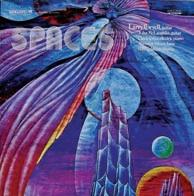
family estate will ever release it. Miles wasn’t playing trumpet on it. It’s very out, not commercial, nothing like when he was playing Cyndi Lauper or Michael Jackson stuff. Do you think there’s any way it’ll ever come out, or is it just too weird?


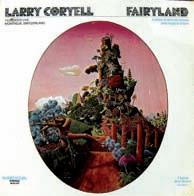
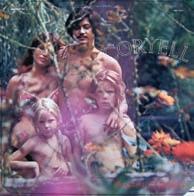
It’s not about weird. They have control, and they can’t profit. I listened to it once—it sounded exactly the way it did back when we recorded it. After we recorded it, about a week later, Miles had one version edited together, and he played it over and over for everybody. He called people to say, “Listen to this.”
So he really liked it.
Well, yeah, it was his production of me, and it was a very nice thing that he did. But, you know, I was so sick with my addiction and my alcoholism at that time, I didn’t process it properly. He even asked me to join the band, and I was too afraid to do it. Also, I was touring a lot with [guitarist] Philip Catherine in Europe, and we were making pretty good money. Miles was a human being, and he had his flaws, but he was Miles. And with him off the scene, at least for musicians my age, we sensed that something was missing. From the overall network in jazz, something was gone.
There’s a cult about Miles, just like there’s a cult about Wynton Marsalis. There was also, to a lesser degree, a cult about Freddie Hubbard. There’s one about Arturo Sandoval. Really good trumpet players can generate a cult around them, because it’s very hard to play trumpet well, and there’s something mystical about the horn.


My music goes on whether I’m being praised or not. The music has a life of its own; that’s why I consider it a privilege to be an artist. I’ve made a lot of music, and I’ve also, more importantly, been able to hear the best musicians of my lifetime. .

56


C M Y CM MY CY CMY K
Shuggie Otis doesn’t care. And I don’t mean “doesn’t care” as in a lack of regard, because Shuggie is one of the most devoted and sincere artists I have ever encountered. In a career that has afforded me the opportunity to sit and share words with inmates, mayors, congressmen, physicians, Grammy Award winners, Christians, and Scientologists, just knowing the man is an honor. This is a sentiment also felt by his longtime friend, George Johnson of the Brothers Johnson, who scored a smash hit with a cover of “Strawberry Letter 23” from Shuggie’s Freedom Flight (Epic; 1971). It was Johnson’s brother Louis who had originally used the song in his wedding.
But to know Shuggie Otis is to occasionally find yourself frustrated at what can only be termed as “Shuggie being Shuggie.” In conversations I’ve had with journalism colleagues and industry contacts since starting this interview, some alluded to his lack of mental stability. Having worked closely with Shuggie over the past year, I can say with conviction that while he will test your nerve, he is hardly unstable. There is a difference.

“I don’t do many interviews,” Johnson says by phone from his home in Altadena, California, “but I’m talking to you because of Shuggie,” who refers to the elder Johnson sibling as his own big brother. “Some of my best times, recently, have been taking my axe and going over to his house and just breaking out in the living room and playing. I will always be there for him—for anything.”
And the respect that Shuggie is given, he reciprocates. He does care—about family, about friends, about his music, and about his newest endeavor as a film buff and budding screenwriter. What he doesn’t care about are the expectations that have been placed on him since his emergence as a guitar prodigy. The son of famed musician, songwriter, bandleader,
and R&B impresario Johnny Otis, Shuggie signed to Epic Records as a precocious fifteen-year-old with no idea what the “business” of show business would bring. Shuggie has always been a live-in-the-moment kind of cat, reared for success by his legendary father, which ultimately worked both for and against him throughout his career, giving him some measure of protection, but also making him a bit ill-prepared for creative independence.
“You know, the way I feel, man,” Shuggie explained to me last September, “I’m fifty-three. I know that with my stuff, it’s been years since it came out, and a lot of people who weren’t even born when I made the stuff are digging it and sending me emails praising me. But I lost interest, you know, and had some personal problems, so I decided to leave it alone for a while, because I’ve done that before. It wasn’t so bad, actually, being out of the business over the years.”
But it was bad, because we as fans—including George Johnson, Larry Graham, DeWayne “Blackbyrd” McKnight, Mos Def, Raphael Saadiq, Dave Chappelle, and Ahmir “Questlove” Thompson—were left without the gift of Shuggie’s talent for over thirty years. But again, Shuggie doesn’t care. And it isn’t selfishness, but simply a matter of Shuggie doing what feels right to Shuggie for his own spiritual health and personal wellbeing. He is a man very much about mood, and emotion, with a sensitivity that runs deeper than that of many of his peers.
“Just hang in there with me,” he often tells me. So I do. And I sometimes wonder if we fans are the ones who are selfish for wishing we had more of the man than we were given.
“I respect Shuggie like I respect Sly Stone and Jimi Hendrix,” says George Johnson. “But to me, Shuggie was more musical than Hendrix, and Shuggie’s got things that Sly doesn’t have. Even though Sly’s got that pop ability, Shuggie has that

61
Shuggie Otis shines light on dark days text Ronnie Reese photography Michael Ochs Archive/Getty Images
Beatles and Bob Dylan kind of pop and R&B songwriting. He was before his time—he was Prince before Prince.”
Before Prince and after Hendrix, working in a decade that saw the rise of Stevie Wonder and the descent of Sly Stone, both of whom shared a DIY ethic that Shuggie sought to emulate with his singular vision on 1974’s Inspiration Information. But he was neither Wonder nor Stewart, and while Inspiration Information is held in tremendous regard today, at the time of its release, it wasn’t marketed as strongly as projects from some of Shuggie’s labelmates, and both he and his father were dropped from Epic Records.
“After my father told me we had been dropped from the label, he was looking depressed, and I said, ‘We’ll get a deal in two weeks—next week, we’ll get a deal,’ ” Shuggie recalls. “That’s been thirtysomething years!
“But you know what? It was a blessing in disguise, because I had some of the best times of my life after that time, and I’m starting to come up again. I’ve had some downers in my life, and not just because of the music business. But am I going to let this get me all the way? No. My life is worth more, and I’m going to get back into it.”
Just hang in there with him.
How did you get the name “Shuggie”?
When I came home as a baby, my mother and her girlfriends started saying, “Oh, sugar, sugar,” and all that kind of stuff, because they loved me so much, I guess. [laughs] Between my mother and her friends, it kind of turned into “Shuggie,” but no one knew how to spell it at first. Finally, my father tried spelling it, and that was me—that’s all I knew before I went to school. But when I went to school, I wanted to be “Johnny” because that’s my real name.
You were born John Otis?
I’m actually born Johnny Alexander Veliotes. That’s my father’s name. He had to use that one for legal reasons when he went into politics, but everybody knew him as Johnny Otis, so he didn’t win. But everything was cool. He got out of that and went back into music, which is where I thought he needed to be. He’s a very talented guy.
When did you get your first real “break”?
What happened was, Frank Zappa called my father. He was a big fan of my dad’s, and used to come out to El Monte Legion Stadium all the time and check us out. Zappa talked to a guy—one of the Bihari brothers—over at this company called Cadet Records, which was in Los Angeles. The Bihari brothers ran a very famous company in RPM Records and also owned Kent Records, which was where we ended up. Frank Zappa told these guys, “Johnny Otis has got this group that’s playing out there in Santa Ana every night and doing after-hours gigs in Montebello on the weekends. And his son is in the group, and he’s only thirteen, wearing dark glasses and getting away
with playing these clubs. But he can play!” So the Bihari brothers said to my father, “Hey, let’s do an album.” So we did an album—Cold Shot—which came out on Kent Records. You were only thirteen then?
I was probably about fourteen when we did Cold Shot. Pete Welding, a very famous critic, did a rave review on us for Down Beat that went worldwide. All of a sudden, everybody who was a musician—famous or not—who read that article knew who we were and were starting to buy the record. We had a single that was a hit in L.A. and some other cities called “Country Girl,” but it wasn’t like it was a smash album. It was an underground hit. Back in those days, that was something to be proud of. And it still is, really, when you think about it, because it wasn’t just Top 40, you know? When does Al Kooper come in?
Al Kooper came in when we signed to Columbia after the success of Cold Shot. We were approached by several labels, and two of them happened to be Columbia and RCA. We went with Columbia.
There was a music-industry convention out in Century City, L.A., at this big hotel and convention center. So we went out there, and they had a show. And at the end of the show, they said for all the new acts that were signed to a label to stand up. I remember standing up and thinking, “This is really cool.” I was on a big label, but I was so young—like, fifteen, sixteen. Anyway, the show’s over, and I come out and see in the distance—not too far, about twenty feet away—Al Kooper is there with this girl. And all of a sudden, he comes over: “Aren’t you Shuggie Otis?” He said a few words about how he loved the Cold Shot album and how outrageous it was. Then he flipped around and said he wanted me to come to New York and do an album with him and Mike Bloomfield. But Mike Bloomfield never showed up, so we just did it ourselves. Al Kooper said it was going to be called Super Session 2, since he had already done a previous album with Stephen Stills and Mike Bloomfield. When the album came to the house, I thought it was going to be SUPER Session, but it was called KOOPER Session Al Kooper Introduces Shuggie Otis.
Like he had discovered you?
Yeah, I guess. But it was funny. One day, my father was talking about how he was credited with having discovered Jackie Wilson, Little Esther [Phillips], Johnny Ace. But then he said, “You know who really discovered them? Their mother.” [laughs]
That album was an Al Kooper project? Because I often see it credited to you, but it was indeed Al’s session?
Oh yeah, he flew me to New York, and we went and did the album in two days. My father was with me, and his manager, Hal Zeiger, and my little brother.
So Here Comes Shuggie Otis is your first album proper?

62 From the cover of Cold Shot! by the Johnny Otis Show.
Yeah, after Al Kooper “discovered” me. [laughs] But me and Al are cool. We don’t know each other that well. We never hung out or anything. It was just business. We actually did a gig together at Lingerie in Hollywood that was kind of crazy, and that’s about all I want to say about it. [laughs] It gets a little involved.
I can imagine.
It was cool. The first set was cool. The second set, I got sick and couldn’t make it to the stage, and I think he got kind of pissed. I had gone with my buddy to the liquor store, and I was already drinking beer but said, “Let’s get some gin.” Next thing I knew, I was in the back of the club dry-heaving. I couldn’t get onstage. Eric Clapton was supposed to show up. He didn’t show up, but I heard this guitar and thought, “Man, that sounds like Eric Clapton.” And I’m down on the ground! [laughs] The guys are with me, they’re trying to help me up, but I couldn’t get up for thirty minutes. That gin hit me, and it was too much. As much as I drank back then, that combination didn’t go well that night, especially with what I had for lunch, which was lobster or something.
So anyway, I said, “Damn, that sounds like Eric Clapton.” [It] turns out to be Al Kooper—he was playing his ass off that night. I finally felt okay and they walked me up to the stage. I get onstage, get my guitar, and they’re playing the last number. I could just feel that Al was pissed. So I strapped on the guitar and played the last number and that was it. I went to ask for my money, and Al muttered something and didn’t even look at me. It was something sarcastic, so I said, “Well, fuck you.” I went home, and I called him. He said, “Hello,” then he noticed it was me, and he hung up. [laughs] He eventually sent me a check for way less than I was supposed to
get. I was kind of pissed off about that, but I don’t have any kind of grudge against Al Kooper. He helped my career out a whole bunch.
You mentioned Eric Clapton—who were some other guitarists you admired?
Jimi Hendrix is my number one—one of my number ones. TBone Walker, I got to be friends with, and you couldn’t meet a nicer person. B. B. King is another hero of mine. I think Otis Rush is one of the greats and has really been underrated. Buddy Guy has got some good stuff too. Son House, I have to admit, is one of my most favorites. Robert Johnson, of course, and Skip James, Charley Patton. There are a lot of obscure guys. I wish I knew their names so that I could tell you. Like, for instance, L.T.D., this group back in the ’70s, they had an extraordinary guitar player. I don’t know what other word to use, but he throws down. And in that song, “Love Ballad,” I’ve never heard anything so perfect. That cat is bad. If you can find his name, put it down there. I’m actually looking through some records for his name right now. It’s John McGhee Okay, yeah! Put his name down there. Their singer [Jeffrey Osborne] was one of my favorite all-time singers too. And there’s an old Bobby “Blue” Bland song—“I Pity the Fool”— whoever plays the solo in that [Wayne Bennett], it’s a masterpiece. He’s another one of those cats that people don’t know who the hell he is, but you know his sound in that song. Jimmy Nolen also, who played on “Willie and the Hand Jive” with my father, he’s another great. He went on to play with James Brown.

What was it like having your father—Johnny Otis— there for you pretty much every step of the way?
It probably spoiled me a little bit, now that I think about it. A lot of people didn’t have that blanket of protection, and as I got older, I wanted to break away from it, but he has kind of a domineering personality. And then it would turn into a kind of an altercation type of thing—an anger thing. I didn’t even know teen angst existed! [laughs] But that happens when a kid gets to a certain age. I have two sons of my own, so I know. But, man, it was great to have him there. I look back and think that if I didn’t have him, there’s a whole lot that I wouldn’t know.
I was just kind of playing on the drums as a kid, and I wasn’t really great musically. But I hung around my dad a lot, and he had the radio show, TV show, he’d play every week, and was a man of the city with the R&B thing going on. If I didn’t have him, I probably wouldn’t have been noticed, because he pushed me out there—he encouraged me. Him and my mother always encouraged my music. He took me to my lessons to learn how to write music. I actually had guitar lessons after I taught myself how to play. I taught myself how to play, and a year later, I learned how to write guitar music. I’m not a sight reader. That’s why I was never able to read music in the studio. I’m not a great sight reader, but I can write anything. And I learned how to write with my hands, not with a computer. Back in those days, computers weren’t that popular. They weren’t even on sale yet. [laughs] Inspiration Information was the first project for you creatively independent of your father, but your star didn’t really take off after that. By the time Inspiration Information came out—it came out in ’74—everybody was getting more pop. It was more of a pop feel all around—a cleaner feel—and I was into experimenting,

leaving mistakes in because they sounded good, all that kind of stuff. I was into experimenting with sound. I wanted to go back to the ’60s, I guess, when they used to allow it! [laughs] They don’t allow that on records now. It’s got to have the same sound, and everybody sounds alike. Man, forget it. Were you still working on Inspiration Information when the Rolling Stones offered you a gig?
Well, I was still doing gigs with my father then, off and on, with my own band and with his. I can’t remember if I was in the middle of finishing the album or if I had finished it or what. They auditioned me, and I jammed with them, but I didn’t know any of their songs. Even though I remembered them, and I dug their music, all of these groups came to me and figured I’d be into them like I am now, or [that] I was putting on old records and sitting around trying to learn some licks. But it wasn’t like that. I was more into myself. I was more into the music I was hearing coming out of my head and into my hands—coming through me. So I got a call from Amsterdam, and it was Billy Preston on the phone. He was a mutual friend of me and the Stones. He said, “Hey, man, I’m sitting here with the Stones right now, and they want you to join the group.” I didn’t think twice. I didn’t say no, like, “Are you kidding me?” I didn’t say it like that. I was a big fan of the Stones back then…the Beatles, too. But when the Stones came out, I liked the Stones better than the Beatles. But I was into a whole bunch of stuff. I told him I had my own group now, and I was doing my own thing. I didn’t want to be with the Rolling Stones. I couldn’t see myself as a Rolling Stone. [laughs] I actually had my own gig that night with my own group. I was never really one to be a sideman. I always wanted to be on my own. Even when
64
I was with my dad’s band, the one thing in the back of my mind was that one day I would have a band of my own. And I eventually did—and I eventually will again, as the bus turns my way, you know?
So I told Billy, “I got my own thing going on now, and I’m going to have to say no.” He sounded a little let down, but said good luck with the group and everything, and that was pretty much how it went.
And this is 1974?
It probably was around that time, yeah. Because joining the Rolling Stones in 1974 is much different than joining the Rolling Stones in 1964, you know?
[laughs] I would imagine so. Actually, I don’t even know how to imagine. I’m not going to try and be one of the people taking the place of Brian Jones.
And if you had joined in ’74, would you have even made it to now?
There’s the thing. When you think about what would have happened to the body—or your mind—where would you be?
In the liner notes for the Inspiration Information reissue, it says that album and 1971’s Freedom Flight “floored Sly Stone.” Was that something you heard first-hand?
I never heard that Sly was a fan of my work—never in my life. But I’m a big fan of his work. He’s another one of my number ones. Maybe he heard something that I did and really liked it. We used to record at the same studio—Columbia Studios on Sunset Boulevard. The Johnny Otis Show, or me, we’d be in one studio, and he’d be in another, or maybe Johnny Mathis would be in another studio, or maybe Andy Williams or Arthur Lee and Love…
Love was a great band.
Man, Arthur Lee is like my big brother—or he was. Maybe he still is. I don’t know. Me and Arthur is a whole ’nother story. I cussed him out a couple of times. That’s how close we were. It was just like a brotherly thing.
But I saw Sly a few times. We never met. We saw each other walking through the halls and whatnot. He was doing these tape loops way before anybody. They said he was bringing every machine in the whole studio and recording drum tracks on all the machines that he could find and fit in one room. He would record four bars of a drum track, take all the tapes and splice them together, and make a three-minute song out of the drum tracks. He was so ahead of his time with it.
When did the rhythm box come into play for you?
I’d walk down the street sometimes to Wallich’s Music City— this music store on the corner of Sunset and Vine. I saw this box there one day—it was called a [Maestro] Rhythm King. I don’t even think I turned it on or played it. If I did, I didn’t really understand what it could do for me. I don’t even think
I had heard it before. I just saw it. When I got back in the studio about a week or two later, one of the engineers told me Sly put out this record for his sister under the name Little Sister. It was called “You’re the One,” and he had another one I can’t remember…
“Somebody’s Watching You”?
Yes—“Somebody’s Watching You.” I loved them both. They came out on Stone Flower Records, because he had this deal with Atlantic. Sly’s younger sister, I can’t remember her name [Vaetta], but he’s playing everything on there. It seemed to me there was a drum machine on there, but it didn’t sound like a machine. It sounded like real drums. I found out later [that] what he did was he used the Rhythm King as a click track, which is what we all did. When I finally got one, I did the same thing. Sometimes, I’d leave the click track in, sometimes I’d take it out, and it sounds like a regular band. So on “You’re the One” and “Somebody’s Watching You,” he’s playing those little buttons on the Rhythm King. He’s got that whole thing going on like a loop. That was one thing. But he’s playing drums on “You’re the One”—if you listen to it, those are real drums. He did the drum loop too. [sings] It was funky, man, and it sounds like he’s playing with a pick on the bass, but this guy told me it was his thumb. And the sound was so cold. Those were two bad songs. I went out and bought them—I had to get them. They said Sly did everything on them.
As accomplished as you are on different instruments—guitar, organ, drums—how much of a need do you have for other musicians when you’re recording?
Well, maybe my accomplishments aren’t all they’re put up to be, as far as playing any instrument. I would say guitar is probably the closest instrument to me. In fact, without a doubt, I feel the guitar is a part of me, even though I played drums first. I can play bass. I feel very close to the bass, almost as close as I feel to guitar—or maybe just as close, because they’re very similar. When it gets to keyboards and drums, I can come up with things. And when it comes to writing music, I can come up with things. As far as being accomplished, I don’t know. I don’t even want to touch on that, really. I know that I can do certain things, and I’m just blessed with the talent. That’s one thing I can say, and I thank God for that, because I know there are some things I can do that I haven’t heard anybody else do. I have to put that down and share it. When you’re that inspired, you should want to share, because I know the feeling, man. I know the feeling of being all the way down, and I know the feeling of being all the way up. And in the middle is where you really want to be to actually have peace of mind.
What was the transition like to Freedom Flight from Here Comes Shuggie Otis? You had a completely dif-

66
ferent vibe on your second album.
Freedom Flight—I didn’t even come up with that idea. You know who came up with that? My father, because we had a song called “Freedom Flight,” and we didn’t have a title for the album. All of a sudden, he said “Freedom Flight,” and it fit in with the whole movement that was going on then. This was 1970 now—maybe late ’70 or early ’71. We weren’t in the ’60s anymore, but we still felt the movements going on from the ’60s—the Black Panthers, the hippies, the activists, and the political thing was going on then. So “Freedom Flight” was, like, “Wow, that’s bad.” It typified me—it was my thing. I’m a Sagittarius, so freedom flight is where it’s at—to be free at all times.
What’s the real story behind “Strawberry Letter 23”
I’m glad you brought that up, because somebody made up some bullshit about that. When people used to ask me this back when I wrote it, I used to do a double take, like, “What do you mean, ‘What does it mean?’?” Just listen to the words and groove to it, you know? [laughs] That’s all you have to do! There are all kinds of stupid little “meanings” out there. I don’t know who made this stuff up. It has nothing to do with a scented letter, or somebody in the Army. Someone told me it was about somebody in jail, and I was like, “What the heck are you talking about?”
Here’s what it’s about, Ronnie—it’s about a boy and a girl who are in love with each other. And they’re in a place that doesn’t seem like earth. And you hear all this crazy, psychedelic stuff, but I wasn’t even on drugs when I wrote the song. I hadn’t even experienced using LSD yet. It wasn’t a drug song. I was thinking of a Xanadu kind of a place where everything was just cool, and there are no problems at all, you know? And so you kind of have to read between the lines of what I initially thought this song to be. It’s just like a paradise where these people in love are at, and they don’t even have to be together all the time to feel their love.
“Strawberry Letter” was that only thing I did all on my own from that album. It’s an incredible song to me now, more than it was then. Then, I was trying to write a pop song that would get on the radio, and it did. But in the back of my head, I was thinking that if I could write a song that was pop enough, that maybe I won’t hit, but somebody else would, and they’ll make it a hit. And it happened. Christmas of ’76, we find out that Quincy Jones is with the Brothers Johnson, and they’re going to do “Strawberry Letter.” We jumped and hollered. Quincy wanted to sign me at one point, but let’s get back to where you were. I don’t want to go into that. That’s fine…go ahead. No, I want to go back to where you were, because I tend to miss things.
I’m keeping track of everything. Don’t worry about that.
Yeah, but I think where you were at was where I wanted to be. I’m not going to let you get away from Quincy, though.
[laughs] Well, Quincy wanted to produce me, but the question in my mind the whole time was: how much freedom was he going to give me? Because I had already finished Inspiration Information and had done the whole album pretty much by myself except for the strings and the horns, and flutes and harps and whatnot, but I wrote those parts out. And I met with Quincy a couple of times, and I mentioned that, and I remember him saying, [imitating Jones] “Well, nobody can do it all by themselves.”
[laughs] That’s hilarious you sound just like him. [laughs] I guess that kind of told me something right then and there, like, “Whoa, here we go…” I always wanted to have control. Once I had complete control, why go back? But me and Quincy are cool—we’re cool as long as we don’t do business together. [laughs]
To make a long story short, it was me who didn’t really want to do it. At one point, it was my mother who said, “Let Quincy go ahead and do the horns, and let him do the songs, and let him bring in the songwriters—let him do what he wants to do. You just sit back and let him do it, then put billboards up…” And I said, “Oh Lord.” It started to scare me. I knew they were going to pull out all the stops. He was with A&M, and all of a sudden, my shit was going to be all over the city—which I would love to have now, right? [laughs] But back then, it was scary. The scariest thing about it was that I wasn’t going to have musical control—I wasn’t going to have any artistic control.
So, damn, if I can’t have artistic control at this very inspirational point in my life, I don’t want to do it at all. It’s just that simple. I don’t care who you are. It didn’t matter. I wasn’t on an ego trip. I just knew what I had—what I had to offer and what I wouldn’t go through. Because my father is a good producer, but he’s a pushy guy, and it’s hard sometimes working with that—very hard, sometimes. And after Dad gave me the freedom…shit, it was just me.
You began your career as a blues player, but after your first album, you started to combine your base style with the technology that was available. And even though you were selective in using technology, that combination was still something rather unheard of back then. A lot of people have said you were ahead of your time, and it’s true. You were a visionary. Yeah, you know, I don’t know…my music’s kind of weird. The blues, though, that’s me. If I pick up the guitar, it might not always be a blues lick, but nine times out of ten, the first thing I play is going to be the blues—or something like blues— unless I’m in another mood or kind of a jazzy or experimental mood. But I’m always going to be playing blues licks through-

69
out the whole thing.
Some of the things you mentioned to me when we first spoke were problems with your label, Epic, and some personal issues. What happened to you thirty years ago—what happened to Shuggie Otis in the mid-’70s so that we barely heard anything from you for almost three decades?

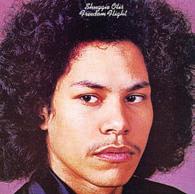
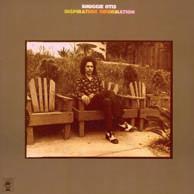

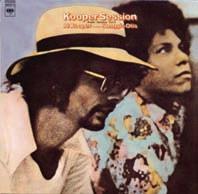

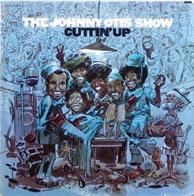

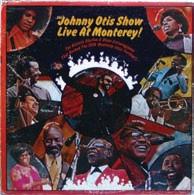
That’s a question that’s hard for me to answer, really. I guess I do have some answers. Basically, at one point, I was doing the album, I was at home, I didn’t have to go out and gig. I still lived with my parents—that’s what I meant by “home”—and I had a studio in the backyard, so you could kind of say I was very, very fortunate to be a kid, seventeen, eighteen, with a major-label deal. I didn’t know what I had. And people say, “Well, you must have had some personal problems.” Well, I did. And a lot of them I’d like to keep personal, because they’re just life. Some might say I was hanging around with the wrong crowd, but that could mean anything, right?
Exactly—that’s very vague.
[laughs] That’s not going to hold up in court, is it? Okay. Well, it wasn’t really that at all. I was at home mostly trying to finish this damn album [Inspiration Information]. It was the first time I had ever written an album. I took two years of arranging lessons, so I knew how to write, but I had never done it for myself. And I was having personal problems in my life with girls and stuff like that. I was a father early—I had two sons—I was sharing a studio with Dad, and I wasn’t in the best state of mind, really, when I was doing Inspiration Information. “Depressed” is actually a good word, but not the kind of depression that I was going to feel later in life. It was stagnating—I felt stagnated, and I felt really depressed at the same time. I didn’t want to get out there and be a big star—a
big guitar star. Not that I didn’t love guitar. The guitar is on almost every song I have. I just wanted to experiment with music. It wasn’t all bad, but it wasn’t the greatest period of my personal life. There was a lot of static and a lot of anger. I was a very cold person back then. I didn’t have it together all that much. I mean, I was cool—I wasn’t, like, all the way crazy, but I had my moments. It all turned out okay, but I can’t really delve into all that stuff, because I’d rather keep it to myself. I know I sound like I’m evading you, and I probably am…
You definitely are, but you’re doing okay. Do you notice how quiet I’m being so you’ll just keep talking?
[laughs] Right, right, right. And they talked about how long I took with my album [Inspiration Information], but there was just so much going on for me at that time. All in all, it didn’t really have to take two years [to do], but I’m not trying to apologize for it at all, because I could really give a shit. If Stevie Wonder could do it and Sly Stone could do it, I thought I could do it! [laughs] That was my mind-set. I didn’t really think about it. I said, “Well, shit, everybody can take two years to do an album now.” Fuck, I was eighteen years old. I didn’t know…I didn’t know. I’m not putting myself down for anything I did. Yeah, I made mistakes. Sometimes, I thought I was being selfish. I had a group, and I had some of my best friends with me, but I wanted to do the shit by myself. It wasn’t until I got finished with that album that I brought my group into the picture. And it wasn’t anything personal against any of the guys. I thought I could get it done quicker playing [everything myself] instead of having to take the time out to teach them to play stuff that they might not even be able to play the way I wanted them to play it. So, no, I don’t want to go into personal problems. But it wasn’t really as bad as people think. .
70
–TIME OUT NEW YORK Kicking ass in slow motion –PAPER MAGAZINE www.nublu.net OUTOCTOBER14 CHECK IT OUT !! DON’T BE LATE... NUBLU SOUND, THE MUSIC OF NOW.
A haven for disparate sounds from near and far


















Os Mutantes transformed modern Brazilian pop text Allen Thayer


“Nobody understands us, and that’s wonderful.” –Os Mutantes
Brazil is kind of like your younger sister. She may be more skilled or talented than you, but no matter how much success she achieves among her friends, the opinion she really cares about is yours. She acts like she doesn’t care what you think, but that family stamp of approval means a lot. And when she finally gets it, she flaunts it, doing the same trick over and over, trying to get that reaffirming response again and again. Brazil can claim to be one of the few countries other than the U.S. to consume more of its domestic musical output than imports from abroad. Nonetheless, the need for international (read: American and European) acceptance can never be ignored. Every major Brazilian musician or group has faced this dilemma: do they or don’t they make a play for international recognition? Do they feign apathy and keep their domestic cred like bossa nova legend João Gilberto, or do they leverage their cheap, befruited-headdress shtick in the time-honored tradition of Carmen Miranda and Sergio Mendes?
Os Mutantes rather obliviously did neither. At the vanguard of Brazilians that openly embraced the emerging international pop culture, the members of Os Mutantes shamelessly incorporated current international trends into their psychedelic Brazilian style. Even as they might have seemed to be pandering to non-Brazilians with their fuzzed-out guitars and pop harmonies, their unique mix of classical and cuttingedge sounds from America, Europe, and their home country
put them in the ideal position to influence and exploit the emerging pop-culture internationalism, known in late-’60s Brazil as tropicália.
Sure, tropicália is way more than one rock band, and Os Mutantes’ legacy is far deeper than their musical output during this brief cultural and artistic movement. However, the band perfectly encapsulated the movement’s reckless cultural cannibalism, absurdist humor, and innovative music. Best to just close your eyes and imagine you are watching the televised competition of the International Festival of Song in Rio de Janeiro in 1968:
Arnaldo Baptista is dressed as a medieval bard with an ostrich feather in his bulbous felt hat. He is armed with a bass guitar invented by his older brother, a mad scientist of amplified stringed instruments. Arnaldo’s younger brother, Sérgio Dias, is stage-right at Brazil’s most famous soccer stadium, Maracana, wearing what appears to be a bullfighter’s costume with a ruffled shirt and a clashing sash tied around his neck. He’s taller than Arnaldo, but he still looks like the kid brother tagging along on his older brother’s musical date. Rita Lee stands in between the brothers Baptista dressed in a white wedding gown, replete with a veil, and in her hand a tambourine. On a stool, she has a tape player with a recording of their good friend Caetano Veloso berating the audience from his disqualifying performance at the festival the week
75
Photo courtesy of Sérgio Dias.
before. She’s prepared to play this tape into the microphone if her band receives the same unappreciative welcome from the hard-line music fans disapproving of Os Mutantes’ absurd costumes and electric guitars. They are singing pitch-perfect three-part harmonies backed by fuzz guitar, thudding bass, and orchestral accompaniment that will take home the best arrangement prize. The song is called “Caminhante Noturno,” and they will end up taking home the fourth-place prize for best composition, but, more importantly, their performance will be witnessed by thousands of Brazilian citizens on this nationally televised performance.
Of course, this explosion of creativity and rebelliousness wasn’t happening in a vacuum; similar revolutions were raging across the globe in the late 1960s, most notably in the U.S., France, and the U.K. During these few years, it was as if youth from around the world had the same unified mission to disrupt the conservative political and cultural hegemony with loud music, no small amount of drugs, and, of course, the free love.
“The tropicália thing was our piece of the action in the world vortex that was happening…that huge revolution in the world,” recalls Sérgio Dias. “Tropicalism was like a kaleidoscope of all of those influences. We didn’t have so much information like today. So we got bits and pieces. Like from the flower power, we just got the flower, we didn’t get the cannon. We were lucky. It was fun.”
The right people in the right place at the right time. Their location in São Paulo, the most modern of Brazil’s cities, their middle-class background, their cosmopolitan tastes, and their voracious consumption of pop culture all combined to make Os Mutantes the house band for this celebrated cultural and artistic movement.

It all developed organically: meeting the right people (Gilberto Gil, Caetano Veloso, and Rogério Duprat), avoiding imprisonment by the military dictatorship (Sérgio: “I believe our image of being clean and young helped us to get away with it”), and never trying to do anything but play music without any notions of celebrity or monetary gain. Rita remembered, “The futuristic sounds we were making happened in a completely natural and spontaneous way; never was anything planned. There was a search for a ‘non-popular’ sound; we never had the intention of making music to be consumed at that time.”1
Not until the late 1990s, decades after their last album as a group, did the band start receiving the accolades they never seemed to care about, thanks to shout-outs from Kurt Cobain, Beck, Sean Lennon, Devendra Banhart, and David Byrne, among others. By now, the Northern Hemisphere critics and niche-music obsessives have thoroughly dredged the depths of the group’s catalog, and now they’re in the classicrock canon.
Now, Sérgio, guitar player for the recently re-formed band (including brother Arnaldo and the original drummer, Ronaldo “Dinho” Leme, but without vocalist Rita Lee) can say with confidence that “Mutantes is a magical band. It is one of those bands that was meant to be. Like the Grateful Dead, Jefferson Airplane, and Jimi Hendrix—they had to be. We are proud to be one of those.”
Before they were a magical band, Os Mutantes were three innocent and oblivious kids with eclectic tastes in search of a new sound. The band’s influences and the story of their early years are relatively unknown in Brazil, let alone in the rest of the world.
It all starts with two brothers and a girlfriend: Arnaldo Baptista, Sérgio Dias Baptista, and Rita Lee. A third brother Baptista, Cláudio César, played drums during their early years and invented some of the more nontraditional instruments in the band’s arsenal. Beginning on the band’s third album, A Divina Comédia ou Ando Meio Desligado, there were Dinho and Arnolpho Lima Filho aka “Liminha” on drums and bass, respectively. And then, of course, there’s their George Martin—arranger and producer Rogério Duprat. Tropicalistas Caetano Veloso, Gilberto Gil, and Tom Zé also make cameos in the band’s story.
São Paulo was a hotbed of amateur musical activity in the early 1960s. Ironically, the Catholic Church had a big hand in laying the groundwork for Os Mutantes and other São Paulo rockers. Most kids in West São Paulo attended Catholic schools where music education was mandatory, and these schools would frequently host competitive talent shows. Some kids would play piano or accordion, while others decided to form bands and cover the latest pop hits, like a young Rita Lee and three of her pals from school. Here, in the big city, kids had easy access to radio stations and imported records.
Like most of the great rock bands of the 1960s, the Mutantes were all self-taught on their instruments. As part of the first generation of Brazilian rockers, most bands were populated by kids still in high school, and in the case of Sérgio, in middle school. The surf-rock stylings of the Ventures were a huge influence on many of the aspiring bands of West São Paulo. But if they weren’t practicing the latest Ventures or Shadows riffs, the average teenage Paulista was likely strumming a nylonstringed acoustic guitar and singing in hushed tones like their new idol, João Gilberto. These diverse genres intermixed with ease and resulted in fusions similar to the pop-folk of Peter, Paul & Mary, the other gringo import influencing many band formations. Then, in 1964, everything changed. You were either a Beatlemaniac, or you were nobody.
The future Mutantes were independently making the talent-show rounds when, according to the age-old mating ritual of musical teenagers, the bass-playing Arnaldo offered to give
lessons to Rita Lee. Rita had dabbled on the drums, but, in an attempt to better understand her idol, Paul McCartney, she decided to switch to his instrument. The bass-lesson connection soon led to Rita’s vocal group, the Teenage Singers, being backed by Arnaldo’s band, the Wooden Faces. It didn’t take much time before Arnaldo and Rita were dating and their respective bands dissolved, resulting in a new band. O’Seis (the Six) would add the youngest Baptista brother, the thirteenyear-old guitar prodigy, Sérgio.
“I dropped out from school when I was thirteen.” Sérgio says. “I told my mom that I was a professional—can you imagine? I dared to say that! She was one of the first women in the world to write a concerto for piano and orchestra, and she was an outrageous interpreter and composer. She never forced us to do anything, so when I told her that I didn’t want to go to school, that I was a professional, she said, ‘Oh really? Okay, fine, so if you’re a professional, then you earn your money, as a professional.’ So I started to do classes, and in six months, I was earning almost the same amount of money that she used to give me. Then she bought me my first electric guitar.”
In 1966, Brazilian rock bands did little more than cover American and English hits, occasionally translating them into Portuguese. O’Seis made an early departure from this mode by experimenting with fusions of poetry, classical, and rock music, bringing them into the avant-garde scene populated by proto-tropicalista Jorge Mautner and their future arranger,
Rogério Duprat. O’Seis found some success, appearing frequently as musical guests on numerous youth TV shows. As the featured band on various shows, they backed current and future stars like Roberto Carlos and Tim Maia.
Against the whims of the brothers Baptista, who would have preferred to cover Beatles tunes, O’Seis band members Raphael Villardi and Rita Lee urged the band to record a pair of original songs for their first single. Both “Suicida” and “Apocalipse” were written by Raphael, with lyrics by Rita and another band acquaintance. The band’s quest for an original sound might have taken them a bit too far into macabre themes and unmarketable rock rhythms; the single tanked and, to this day, is extremely hard to find on vinyl.
Following some less-than-professional performances, the brothers Baptista and Rita decided that they would have a better chance at success as a trio. It was Brazil’s “Little Prince,” Ronnie Von, who gave this newly formed trio their name and their first moments of fame. In 1966, Von was a rising star in the teenybopper set with his chiseled features and a knack for a Beatles cover. A television station asked Von to host his own show to steal viewers from “king of iê-iê-iê ” Roberto Carlos’s show, Jovem Guarda (Young Guard).
Desperate for new talent to rival Carlos’s monopoly on the nascent Brazilian rock scene, Von met with Arnaldo, Rita, and Sérgio. They quickly discovered that they were all avid Beatles fans and the brothers and Von shared passions for sci-fi novels
76
Photo courtesy of Sérgio Dias.
and fancy cars. O’Seis was no longer a relevant band name for the remaining trio, so it was Von’s suggestion of “Os Mutantes” that fit the band’s nontraditional sound and appearance. The name came from a popular sci-fi book, both Von and Arnaldo’s favorite, O Império dos Mutantes (The Empire of the Mutants), a Portuguese translation of La Mort Vivante by French author Stefan Wul.
Using a popular children’s book, Saint-Exupéry’s The Little Prince, as inspiration, Von’s show, O Pequeno Mundo de Ronnie Von (The Little World of Ronnie Von), appealed to teens as well as little children and their babysitters, who often filled the studio audience. Over the course of the next few weeks, the band was prominently featured, performing songs by the Rolling Stones; Peter, Paul & Mary; fugues by Bach; Mozart’s “Marcha Turca” played by two guitars and bass; and a version of “Eleanor Rigby” with a vocal arrangement courtesy of Sérgio and Arnaldo’s mother.
Os Mutantes were a hit, as was Von’s show. Fairy tales, castles, and baroque pop music were a perfect fit for the newly baptized trio, at least until a new producer took over after only a few weeks. Rita remarked in the band’s first major interview from 1966, “The program, unfortunately, began to become just like all the others. Ronnie won’t do anything except what the directors want. He tried to create a program with renaissance music, bossa nova, everything else, but it didn’t work.”2
By year’s end, the Mutants were no longer affiliated with Ronnie Von’s show, but their performances earned them invitations to perform on other variety shows and gained the attention of other producers, musicians, and directors with more creative aspirations.
It was during the filming of a musical cameo for the arthouse film As Amorosas, directed by Walter Hugo Khouri, that the band met their musical fairy godfather, Rogério Duprat, Khouri’s cousin. Coincidental meetings like these proved crucial to the band’s finding opportunities to let their wildly creative impulses run wild. “The scene was very small at that time,” says Sérgio. “There were no big tours; there were no huge sales of records or anything like that. No market, no nothing. There was television—a few TV programs—and gigs and festivals and all that. But, on the other hand, there were a bunch of people who were closer and were more intimate because of this.”
Os Mutantes were beginning to find kindred spirits in the music business who recognized the bizarre blend of influences and musical styles of the trio. A TV producer introduced them to Gilberto Gil, a young composer from Bahia who wanted to explore a more experimental sound. Gil was struggling to find the right sound for a new song, “Domingo No Parque” and was looking for inspiration from the Beatles’ newest record, Sgt. Pepper’s Lonely Hearts Club Band. While
they found common ground in a shared love of the Beatles, Gil’s use of traditional Brazilian musical forms and the song’s Portuguese lyrics nudged the band out of their comfort zone, but ultimately into the national spotlight.
Gil knew full well that his modern arrangement for “Domingo No Parque” would ruffle some feathers among the antiestablishment youth that favored traditional Brazilian styles over imported styles and instruments. On the eve of their 1967 debut performance at the Festival da TV Record, Gil decided to give fair warning to his backing band, “advising them that they might experience some difficult moments. He was fairly certain that there would be boos when they took to the stage with a bass and electric guitar, absolute insults to the purists and nationalists. Above all, Gil and the Mutants would be the first to commit this affront in a festival of Brazilian popular music.”3
As if their electric instruments weren’t enough, Os Mutantes debuted their eclectic tastes in fashion during the same performance, dressed in plastic tunics, capes, and silly moustaches. Facing the anticipated boos, Gil and Os Mutantes played on, smiling throughout. Gil’s song took second place, and Os Mutantes went down in Brazilian history as the first to play electric instruments during a prestigious national song competition, much like when Dylan “went electric” at the Newport Folk Festival in 1965.

With regular rehearsals in advance of the festival, the trio became a fixture at the apartments of Gilberto Gil and Caetano Veloso, where other key tropicalistas liked to hang. It was at these informal jam sessions that they started to write their own songs in Portuguese, using poetic devices like onomatopoeia and alliteration to embellish their youthful lyrics.
Rita and Arnaldo were both at least five years junior to the Bahians, and Sérgio even younger, but Gil and Caetano recognized in them an understanding of international trends that transcended the simple mimicry of the Jovem Guarda stars. While the Bahians were striving for an original and modern sound like what they heard coming from the U.S. and the U.K., Os Mutantes actually “looked like British kids of the Beatles’ generation…. Os Mutantes gave the impression that they lived inside that world.”4
Sérgio asserts that Os Mutantes “were a huge influence on Caetano and Gil, because they were Brazilian writers, and we had that vast [pop culture] information between Rita, Arnaldo, and me.” It’s this very fusion of the Bahians’ concepts mixed with Os Mutantes’ reckless musical innovation that made tropicália a dynamic yet unified movement and not just a historical footnote.
A brief look at how the different players talked about the movement supports these divergent yet complementary approaches to the same message. Gil described the loose gathering of musicians, authors, and visual artists as an attempt to
79
Photo courtesy of Luaka Bop.
“confront the stagnation and seriousness that has installed itself in certain sectors of Brazilian popular music.” And Caetano wanted to create “a crueler language, more real in relation to man.” Arnaldo, on the other hand, said, “It’s more difficult to say to a reporter the word ‘tropicalismo’ than to explain, in detail, what we are doing. I have the impression that the principal characteristic in our tropicalism is the irony that we introduce into all of the closed musical styles. We embrace this irony. And we, Mutants, want to make a music, above all, that is beautiful and free.”5




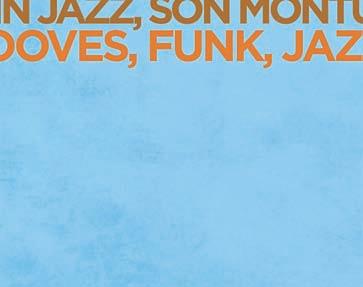





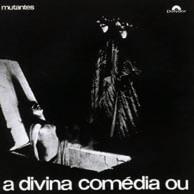
Clearly, Os Mutantes were far more playful, inspiring the other tropicalistas like Gil to have fun with the music even in the face of a repressive military dictatorship. “When we were kids, we faced a lot of serious repression, and we were under a severe military government—a lot of people being killed, a lot of people tortured,” says Sérgio. “It was heavy, very heavy. And nasty. But when you are a kid, you have this thing, this war inside, this delight of going against whoever says that you can’t. And we were damn lucky that they didn’t arrest us or torture us or do anything like that, because we probably would have lost faith.”
Tropicália emerged from this confluence of the old-line political extremism and cultural conservatism and the new avant-garde influence of visual artists, arrangers, and poets— with the leadership of acceptable counterculture icons in the form of Caetano and Gil. But to forget the humor and freedom of Os Mutantes is to miss the whole point. The rest of Os Mutantes’ story is well documented by their recordings and band members’ occasional appearances in the gossip tabloids: five albums with the original members, Rita Lee’s solo success, Sérgio’s progressive experiments, and Arnaldo’s psychiatric internment and apparent suicide attempt.
Arnaldo once commented, “Nobody understands us, and

that’s wonderful.” The band’s triumphant return to the stage as part of the 2006 “Tropicália: A Revolution in Brazilian Culture” show in London was released last year as a two-disc set on Luaka Bop. But just as their audience was beginning to catch up to them, Os Mutantes have morphed once again into a new band without Arnaldo, who dropped out to write his memoirs and pursue his solo recordings. Rita Lee’s pinch hitter, Zelia Duncan (a well-known solo artist in her own right), is also returning to her career. Just as before, Sergio is carrying on the band’s legacy with a recently released song, “Mutantes Depois” (Mutants Later), and their first studio album in thirty-four years is scheduled for release later this year. Maybe we’ll never get the band, but we can at least try to understand where they came from. Now on their second go-round, Os Mutantes are more relevant than ever, with sold-out shows in the U.S. and Europe. The last mutant, Sérgio, reflected after a sold-out show in New York City’s Lincoln Center, “The kids are on to us, and this is beautiful, because I believe an artist is basically the reflection of their audience. It is amazing that, somehow, forty years later, we are a mirror for this generation. It is a beautiful thing.” .
Visit waxpoetics.com for a Record Rundown with Os Mutantes’ Sérgio Dias: fifteen influential records that shaped the band’s sound.


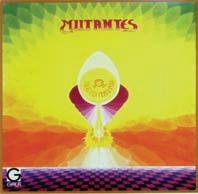
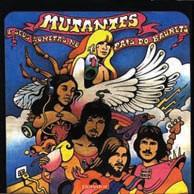
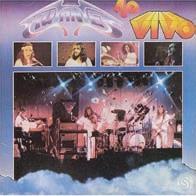
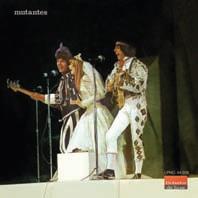



Notes
3. Ibid.


4. Ibid.
5. Ibid.
1. Bizz (Brazilian magazine), November 2000, Emerson Gasperin (with reporting by Ricardo Alexandre, Fernando Rosa, Alexandre Matias, and Sergio Barbo).
2. A Divina Comédia dos Mutantes, Editora 34, 1995, Carlos Calado.
80







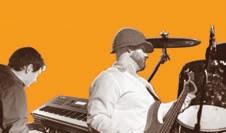


























www.laurareed.com • myspace.com/laurareedmusic New Live Album and DVD double disc available online and at independent record stores October 28th N a r Live at Tree Sound Studios A Green Train Featured Artist www.greentrain.org # C M Y CM MY CY CMY K
Slick Rick set the standard in rap’s glory years text David Ma

“It’s Slick Rick style,” says Rick Rubin, nodding to Jay-Z, smiling. “Yeah, I wanted to take it on some old-school, storytelling shit,” Jay responds.
The quick exchange, during the making of “99 Problems” in the film Fade to Black, captures Slick Rick’s enduring legacy. Two decades since The Great Adventures of Slick Rick went platinum, he’s now a point of reference for modern artists. His spirited look—eye patch, big jewelry, even bigger smile—was a stylistic turning point for rappers.

No longer in headlines for music or legal troubles, Rick is now vocal about the responsibility of his twenty-year craft. “Rap can reach kids and can help adults reach kids. It should be utilized,” says the forty-three-year-old rapper, readying to perform to a crowd of youngsters. “These kids weren’t around when hip-hop started. So we, as the artists, can’t keep living in the past. Hip-hop is an adult now, so it should act like one. I want future generations to eventually benefit from our art.”
As future fans discover his art, Wax Poetics asked Rick about his story, his maturation, and how hip-hop can be a tool for change. He now tours occasionally and enjoys the quiet life he’s earned. Times have changed, but as Rick Rubin and Jay-Z pointed out, Rick’s presence can still be felt.
What are your days like now?
I just take it easy, taking care of things and such. Do you still get recognized often?
Yeah, I still get recognized. I mean, there aren’t too many people walking around with an eye patch on, so it usually sparks their memory.
You came to the U.S. when you were eleven years old. What were the immediate differences between England and America that you remember?
What I remember about London is [that] they didn’t play any
Black records. Records I grew up with were common stuff like the Beatles, Bill Haley, and stuff like that. I love that stuff, don’t get me wrong. But when I came to the Bronx, it was a lot more multicultural. The Black soul of the ’70s was in full effect! Shaft, Bruce Lee, and all that was going on! America, the Bronx specifically, was exciting and a lot busier in comparison.
What sights did you see as hip-hop was becoming really popular?
When it first came out, it was the same story you’ve heard: people started break-dancin’; people would bring out huge speakers for block parties; violence stopped for a while. It was a great sight to witness. And great groups started to formulate, like the Cold Crush Brothers. And all this happened in the Bronx!
People used to do routines, people started looking for records that had a reputation for being dope—it was great. Guys started freestyling over these popular records, and young artists were very conscious of people’s reaction to those records. They were very aware of the routines they were doing. And they were onto something, ’cause those same records and routines are still popular today. I also remember cassettes and how important they were too. That really helped popularize hip-hop a lot.
What were you listening to at the time?
It was the disco era, you know? People were really diggin’ disco, and that’s what everyone was playing. A lot of people forget that disco was a huge part of hip-hop when it first started. Heartbeat by Curtis Mayfield was real popular. Gloria Gaynor and those kinds of records were everywhere. You wouldn’t think I was a disco head, but I was listening to a lot of disco then. [laughs] I also liked Smokey Robinson and Gladys Knight too, of course. But everyone was getting down with
85
Photograph by Bob Leafe/Frank White Photo Agency.
disco whether they like to admit it [now] or not. [laughs] Talk about the Kangol Crew and how it developed your career.
It was a group of guys I went to high school with. We didn’t have any instruments or headphones or anything. [laughs] We would just bang on the desk and rap along to it. We would come up with real slick routines, and people in school loved us. We would also do songs that were popular at the time, so we got a lot of recognition. We named ourselves the Kangol Crew because we loved the Kangol hats, and just that whole style—Puma, Adidas, British Walkers, Clark Wallabees, Cazals-everything that was hip and stylish at the time. We’d wear suit jackets and perform around the school and neighborhood. We were nuisances really. [laughs] And once we graduated, two of us went on to make records. That’s primarily the reason why people even know of the Kangol Crew, because Dana Dane and I went on to become famous. How is your relationship with Dana Dane?
Our relationship is good. I was glad to see him do well for himself after we grew up. I mean, he made his mark on hiphop with “Nightmares” and “Cinderfella Dana Dane.” I think his first album did real well too, and I was glad to see it. I know it’s been reported that we feuded or whatever, but that didn’t happen. I wish him well.
Do any tapes of the Kangol Crew tapes exist?
Nah. [laughs] We were poor kids. We were just banging on tables and having fun.
You were one of the first to wear huge, overemphasized jewelry. What made you do that originally?
To the mainstream public, that wasn’t seen too often until rappers like me did it. But from the areas we grew up in, you’d see that all the time. Dudes would be wearin’ huge, ridiculous gold chains! [laughs] They probably didn’t get the chains in a nice or legal fashion, but they were considered the kings of the neighborhood. So we took from these older cats and used it for ourselves when we got famous. We were just trying to be like the older brothers. Plus, once women were exposed to such giants in their own community, why would they care for the small [fry] of the world? [laughs] That’s how it started, and it just got bigger and bigger; I definitely didn’t invent it or anything. Nowadays, some rappers look like they raided Queen Elizabeth’s hidden chest. [laughs] It’s ridiculous. Take us back to the day you met Doug E. Fresh?

Well, I’ll always remember, because he was the Original Human Beatbox, which was a fairly new branch of hip-hop then. I was introduced to him twice, once at a skating rink that he was performing at, and the other [time was] when he was judging a rap competition. He was already known and was judging different rap competitions around the city. At the skating rink, the first time we met, I was bugging him like, [imitates kid’s voice] “I’m a good rapper, you should hear me,
you should hear me!” But he didn’t pay me much attention, ’cause I’m sure a lot of people bothered him and stuff.
So the next time I saw him was during a battle my friend was in. My friend asked me to go onstage and rap with him. It was a very big contest, and we went up against some very good neighborhood rappers from the Bronx. Anyways, we came in second. [whispers] Although some people said we came in first. That’s when Doug recognized me and said what’s up. That’s when I told him we had met before, and I was like, “I told you I was good. You should put me on.” [laughs]
Do you remember your original routines you guys would do back then?
We’d do “La Di Da Di” all the time. He’d beatboxed over the “Impeach the President” break a lot too. Meanwhile, I’d do my story raps. A lot of people weren’t into the story side of rap then, so I guess I just sort of fell into it. I’d just try to tell humorous stories that people could follow along to. Did people notice you immediately?
Yes. People seemed to like my shit right away. Where did the phrase “La Di Da Di” come from?
I guess it comes from my upbringing in England. A lot of my phrases came from my childhood and stuff I picked up from other people’s music. Like the Beatles, for example: [sings]
“Michelle, ma belle…” You don’t even need to say these artists’ names, you just have to touch on their music and people will get it. So I guess I incorporated influences from America and England into my songs.
You made a lot of beats when you were younger. Did you stop producing for a reason? Or was rapping just more your calling?
When I was making my first album, making beats came easy to me. There wasn’t complicated equipment or stuff like that. Things were just basic. So when hip-hop became bigger, they came with all this complicated machinery and the sound sounded more clean and professional. So it became hard to compete with professional producers. And, plus, record labels would try to push producers onto your projects, so it was difficult to grow as a beatmaker if you weren’t already one. I guess it’s wiser from a business standpoint. But, hey, the beats on “Children’s Story” and “Hey Young World” and “Mona Lisa” weren’t so bad, right? [laughs] I made all those beats, and I liked what I did on those songs.
What sticks out in your mind about the time when you were making 1988’s Great Adventures?
It was a time of breakthroughs. I mean, I was a mail clerk making 560 bucks a month. I had a girl and the whole shebang, so I had to be budgeting shit all the time. But I was basically still doing okay for myself. While you’re just making ends meet, you don’t realize how hard you struggle, ’cause you just wanna work and have your own place. And from bugging Doug E. all the time, he gave me three hundred dollars for a
86
Photograph by Krasner Trebitz/Frank White Photo Agency.
show. I know it may sound petty now, but you could imagine going from a five-hundred-dollar budget, paying three-fifty for rent, plus you gotta buy food and tokens to get to work? It was hard. Then, all of a sudden, I was making three hundred bucks a night! In two nights, I could make what I made in a month! The difference in money was a big jump. Getting paid to do a hobby, something that’s fun and exciting, and you’re getting paid for it? It blew my mind. That’s what I remember ’bout that era.
In Brian Coleman’s Check the Technique, you said you didn’t like the Bomb Squad’s work on Great Adventures. What about it did you specifically not like? Certain beats and me don’t work. “Teacher, Teacher” was garbage. No disrespect, but it was filler to me. I mean, you got people [working] on a record behind the scenes who have to keep score of what they think the public would like, and that’s when they brought in the Bomb Squad. You have A, B, and C level beats. Of course, you have your D and F level beats too [laughs], but you always want to stay in the A or B levels. I mean, sometimes a good beat just doesn’t bring out the best in an MC, or vice versa. And that was the case with Bomb Squad’s beats for me. I mean, I like their beats, I just didn’t think they work well with my style. Did you ever work directly with Eric Sadler and Hank Shocklee? How were those sessions? Actually, we only worked directly with each other once. It was for “Lick the Balls.” They were great guys, and it was fun as far as I can remember. I knew that they had done songs for Public Enemy and were well respected, so I was excited. They’re nice guys, and working with them was actually cool. Just ’cause I didn’t like some of their beats doesn’t mean I don’t respect them. “Lick the Balls” is definitely my favorite of all the tracks they gave me.
Your songs “La Di Da Di” and “Children’s Story” have both been covered by other artists. It just proves to me that the public has an excellent perception of things—and not the experts. Time and time again, it proves that experts don’t know as much as they think they do. “Children’s Story” has been covered so many times, and it just means that I connected with the public. How was your relationship with Russell Simmons, and what role do you think he played in your career? Well, he was a record-exec type, manager, whatever you wanna call it. But being an exec means I didn’t see him as much as I would’ve liked. As the artist, you want to work closely with the guy that’s gonna make the final decisions on your record. We had our ups and downs. Pretty much what I told Russell was that it was hard for me—going from a kid who had two rap songs, and having to make twelve songs overnight, was difficult. Plus, he had all these “experts” telling him what was best. I felt he didn’t know what was best for me as an artist;
he was all business. Don’t get me wrong, I wanted to make money too. But he didn’t take a lot of my suggestions on those early records.
Can you give us an example of how you guys disagreed?
I wanted “Children’s Story” and “Mona Lisa” to be released as singles first, but they put out “Teenage Love” instead. I mean, it’s not a bad song, but in a fast era where hip-hop was booming, you want to put your best foot forward, I felt. And you have cats like Rakim and Kane out there too, and they’re killing it, so it didn’t make sense to me to put out a slow-sounding record. It’s almost like you’re defeating your own purpose. I mean, “Teenage Love” was a cute song and all that, but still. Luckily for us, the people didn’t abandon ship. Russell and I had a lot of minor conflicts like that. What was it about Big Daddy Kane and Rakim that struck you?

They took hip-hop to the next level. They were skillful in many things, and they obviously perfected the art of battle rapping. Their beats were gritty too! You know how they say, “If you can make it in New York, you can make it anywhere”? Well, Kane and Rakim got love from everyone in New York. They brought everyone’s skill level up by being so skillful themselves. Their grit was great.
In 1991, you released your sophomore album, The Ruler’s Back. What do you think of it when you hear it now?
I don’t like it. It was during the trial, after I was incarcerated for the whole gun-possession thing, so I wasn’t able to do my best. A lot of the music was added to my vocals after the fact, so I don’t think it complemented me correctly. It definitely wasn’t my best work. The rhymes were too fast, so you couldn’t get into the stories. It was just really rushed. I think my best albums are the first and the last album. What about 1994’s Behind Bars? You made that after getting out of jail.
I recorded Behind Bars while I was out on bail, and it wasn’t a good experience either. I only had such a little bit of time to do it in. Basically, I recorded The Ruler’s Back and Behind Bars in a span of two to four weeks. Behind Bars was rushed, and wasn’t what it needed to be. I needed outsiders looking [in] to slow everything down and not keep pushing these projects. But with those projects, nobody did.
So you consider 1999’s The Art of Storytelling to be one of your best works. What was life like by this time?
Things were a lot more relaxed. I learned from the mistakes of the last two projects. People actually listened to the input I put into it. You could pretty much hear the variety of stories I told on that one. I was also able to collaborate with the hottest artists of that moment: OutKast, Snoop, Nas, and
89
Photograph by Frank White.
Raekwon. A lot of those cats I worked with showed me a lot of respect too. That was a good experience, and I think the album reflects that. To me, this album was an achievement. I went from making silly rap songs in ’85, to being incarcerated, to being back out, struggling, then making a great album. It went gold, so I’m proud of it. So now, I get to say: [yells] “My last album went gold!”
Are rumors about an upcoming album entitled The Adventure Continues true?
Yeah, but I’m only releasing it when I’m ready. We’re recording it at the house, and we’re taking our time with it. No record execs this time! [laughs] It’s a constant work in progress.
Do people ask you about your eye patch? There have been many stories about it. What’s the real story?
Well, I can’t see out of my right eye. A window shattered when I was about two years old, and glass got into it. And the patch is for cosmetic reasons too. It’s like Superman going into his closet before he has to face the world. Instead of a Superman suit, I throw on my eye patch before I rap. [laughs] As a revered rapper, where do you see the art of rapping going in the future?
I think people will just try to perfect the personality they want people to hear. Some of us just kick raps—and some are very conscious of how they portray themselves on wax. Nowadays, people don’t care much for stories; they just wanna hear their favorite rapper’s personality shine through. It’s gonna be less person and more persona, you know? So I think that’s where lyricism is going, not necessarily good or bad, just changing. How do you see hip-hop advancing?
I see it as a racial melting pot, which is a wonderful thing. I mean, hip-hop is already multiracial and diverse, but it’ll continue to be more widespread. It’ll be like a pulpit for the world—like in church. You get the right people in front of a pulpit and you can change the world.
I interviewed Chuck D recently, and he said, “People nowadays use hip-hop as a toy, instead of a tool.” I definitely agree. Rap is being disregarded as the art it can be. Hip-hop should be used to help people, to reach kids, to get messages across. Like all art, it can teach.
Do you hear yourself, your influence, in contemporary rappers?
Sure I do. But I’m sure you could hear Cold Crush Brothers in my style too. I think it’s only natural. It’s all about making our art, hip-hop, richer. If a child is hungry, you feed it porridge. If humans out in the world are actually hungry for smart, digestible hip-hop, then it’s our duty provide it. Each one, teach one.
What has been your approach to writing stories you’ve told?
Well, I think it comes from high school English class, believe it or not. [laughs] That’s where I learned to strategize and lay out an essay. First, you have your intro, then your body, then the conclusion. And hip-hop is pretty much just like that— you have your three sixteen-bar [verses] and a little chorus. And your three bodies have to relate to the chorus. And all the while, you display your level of maturity and smarts through what you say. You have to make things sensible and accessible. Otherwise, it’s like force-feeding somebody liver, and nobody likes liver. [laughs]

What other songwriters have been influential to you?
I love the Beatles. I like the Supremes and Dionne Warwick. Oh, and Queen too. [sings beginning of “Bohemian Rhapsody”]
“Mama, just killed a man...”
How do you want your songs to be remembered?
I just want people to enjoy my records. When you go to a club and you’re getting your drink on, you want to do so while [you’re] listening to good music. If the music sucks, then you’re just gonna feel like an alcoholic. [laughs] I don’t want to make anyone feel like an alcoholic.


What do you want younger cats to gain from your recordings?
Just to know that my raps have morals in ’em. You don’t always have to be tough, acting hard, and all that. Sometimes, rap celebrates the worst qualities of our neighborhood, and I think my music has lessons hidden within the songs. Like, I’d use humor to get a message across, and kids should use other ways of asserting themselves without violence and all that.
Ultimately, what do you want your legacy to be?
As a storyteller on wax, as the icon of storytelling in hip-hop.

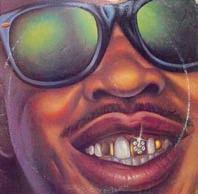
I’d be happy with that. I’ve just always been honest and tried to write humorous stories that anyone can enjoy. .

90
jackson conti sujinho

CD Available In Stores Now and on Itunes

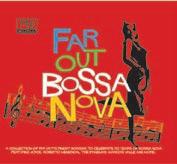




For More Info: www.myspace.com/jacksonconti www.mochilla.com


Madlib loves Brasilian music. When he went to Brasil in 2002 with Mochilla to participate in the production of Brasilintime his one mission was to meet Ivan “Mamão” Conti the drummer of the legendary trio Azymuth. Madlib had made an Azymuth tribute record he wanted to play for him. This moment across generations and continents was revealed in the critically acclaimed documentary Brasilintime: Batucada com Discos. Now the fruits of this meeting and eventual collaboration are being released by Mochilla.

C M Y CM MY CY CMY K
Grant Green Jr. reflects on his father’s signature sound text Zachariah O’Hora photography Francis Wolff © Mosaic Images
I’ll never forget the first time I heard Grant Green. It was a scratchy old record my roommate got from his guitar teacher. The sound bled under my door from his closet-sized bedroom across the hall. The guitar was so crisp, it was like golden California sunshine, and the drums were so in the pocket (Idris Muhammad, no less), your head couldn’t help but nod. Most of all, it was just damn funky. The album was Alive!, and the guitarist was Mr. Grant Green. If I could have a soundtrack to my life, this is the one I would choose.
Throughout his career, Grant Green worked and struggled under the radar while other jazz guitarists breezed their way to the charts. Fifteen years after his death, he almost singlehandedly put Blue Note back on the map. His son, Grant Green Jr., plays guitar too, in a group with soul-jazz giants Reuben Wilson and Bernard “Pretty” Purdie. Grant Jr. is an ex–New Yorker living in Atlanta, and I put in a call to him to learn more about his father, an unsung hero of jazz guitar.

Your dad was born in St. Louis?
St. Louis, Missouri, that’s right, in 1933. How did he start making music?
He played with a lot of local bands, local rock-and-roll and blues bands around St. Louis.

He played with [saxophonist] Jimmy Forrest, and I always remember Jimmy Forrest, because he’d come by the house and he had a funny walk, kind of like a bird, like a pigeon or something. [laughs] And they recorded for Delmark Records a couple of albums. The first one was called All the Gin Is Gone
How did he go on to work for Blue Note?
Well, Lou Donaldson came to town, and he heard Grant playing. And he went to Frank Wolff and those guys at Blue Note, and he said, “You got to come hear this guitar player out of St. Louis, man. We got to get him signed, so he can come work with us.” And they did. So they recorded Here ’Tis with Baby Face Willette on the organ.
He recorded quite a bit as a sideman and a leader. He did. Alfred Lion liked him so much that he was one of the few people who was offered a recording date as a leader before he did the sideman thing. He first cut First Session, but they didn’t release it for whatever reason. And they released Grant’s First Stand first, but it was actually the second recording. He made, like, twenty-five or so records as a leader, and maybe sixty more as a sideman. He recorded with everybody—Larry Young, John Patton, Reuben Wilson, Idris Muhummad— you name ’em, and he played with them.
Anytime you hear even a couple notes of your dad’s playing, you know that’s Grant Green. How did he develop his signature sound?
Well, in the early days, he used a Gibson 330. And that’s how he got that really high, really bright sound. But it wasn’t tinny. Then he played an archtop Gibson with, like, Stratocaster pickups—I think it was a Gibson L-7. Then all the way up to maybe 1973, he played an Epiphone. The last guitar he bought was a D’Aquisto hand-made for him by Jimmy D’Aquisto.
I read somewhere that he would turn down all the
95
highs and lows on his amp to get this golden midtone.
Now, his tone, a lot of people thought he did certain things to his amp, and he did do certain things, but a lot of it was just his guitar and how he played. He had really huge hands; he could attack the guitar differently, very physical. And he played like a horn player. His idols were horn players like Charlie Parker, and that’s why horn players loved to play with him, because he thought like a horn player. And of course, he was a big fan of Charlie Christian. He seemed to be into doing concept albums.
Uh-huh. He had the Latin Bit, with Willie Bobo and Patato Valdés doing the rhythm section on that album. People didn’t like it when it first came out. There was a country-and-western one, and there was Feelin’ the Spirit, which was all basically old Negro spirituals. I actually cover one of those tunes, “Deep River.”
That’s a beautiful recording, and it featured a very young, pre-Miles Herbie Hancock on it.
That’s right. He was a youngster back in those days, probably nineteen or twenty at the time.
They must have been feeling each other musically, because Grant Green cut some of Herbie’s tunes later as well.
Right. They did a couple records together because they had a really good feel together. He covered “Cantaloupe Island” on [Donald Byrd’s Up], and later he did “Maiden Voyage,” which was an outtake from the Cliché Lounge session.
Is there other material out there in the Blue Note vaults that hasn’t been released yet?
Well, there was the Live at the Mozambique album that just got released. I called them about that, ’cause I knew it was in there.
That club is a legendary place in Detroit.
That’s right, a lot of people used to come through and play at that club, from Roy Ayers to Little Esther Phillips. Lot of different people used to play there, and we used to see them play as kids.
They used to let you in?
Yeah! They used to let me in, ’cause they knew I was Grant Green’s son, plus I was also big for my age. That helps.
It does! [laughs]
The Club Mozambique recording was about 1970? That’s right, around the same time that the Alive! album was cut.
That’s a special album. Do you have a favorite album of your dad’s?
Grant Green Alive! is my favorite funky album, and Live at the Lighthouse. Those two albums had so much energy, it was, like, in overdrive. And the Alive! album is just so funky. You
got “Sookie, Sookie” on there and “Let the Music Take Your Mind”—you know, the Kool and the Gang cover. But my absolute favorite album, as far as the straightahead jazz albums, would probably be Idle Moments. He had Bobby Hutcherson on vibes on that one, and he really liked to play with vibes players. And the Latin Bit...that was a great one too. Tell me about the Club Mozambique. It seems like it was some kind of a magical spot for recording. It was one of the major spots to play in Detroit. At the time, there was, like, two places to play, the Club Mozambique and Baker’s Keyboard Lounge. Remember Eddie Jefferson? That’s where he got killed, right in front of that club. It still exists, actually. They don’t book national acts anymore, but they still get a lot of local acts in there. After Motown moved out to California and the auto industry collapsed, that took a real toll on the city.
As far as jazz guitarists go, Wes Montgomery and, of course, George Benson are much better known. Why doesn’t Grant Green have that level of recognition?

Well, I think that with Wes and George, they got more into a pop thing. And at the time, that was a very smart move, because that’s where the bread was, and with that, you got some status. And Wes’s records were on the pop charts, you know? That was just a bigger market. The other guys, like my old man and Kenny Burrell and some of those other guys, they were just on the jazz charts. Wes was a great player, and he made the move to pop. It was a smart move. I think that had a lot to do with Creed Taylor. He was the producer for that stuff back in the day over at Verve. Creed was smart, and he was always into that big sound, which you heard later on the CTI records—you had strings and brass and all that, and it was very pop oriented.
Grant Green recorded pop songs, though, like the Beatles’ “I Want to Hold Your Hand.”
The Beatles were so big at that point that everything they touched turned to gold. You know what I mean? That if you could do a hip instrumental with that, you could sell some records. And maybe someone younger, or rock and rollers, might see it and pick it up, because they see the Beatles cover, and maybe they get into the rest of what the artist was doing. It was a crossover movement. But weren’t so-called jazz purists and critics trashing the whole crossover thing, including work that Grant Green did?
Sure. But, you see, jazz music has always done that. They were always doing pop tunes throughout. I mean, jazz classics, the standards we call them now, were pop tunes back in the day. That’s true. Gershwin and Cole Porter were pop. Exactly. The thing is, you have to stay up with the times. You have to grow. Take Miles, he changed so many times in so many directions, it was amazing. He did bop, and played
96
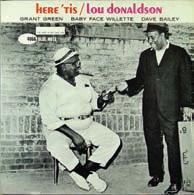


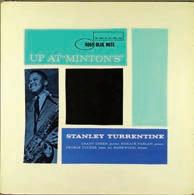
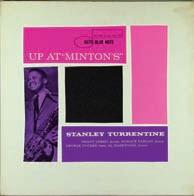




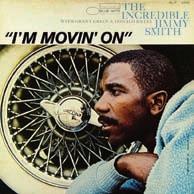



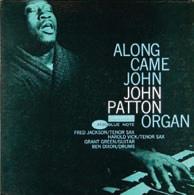
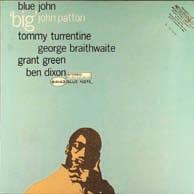
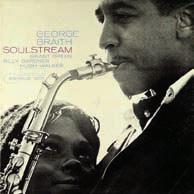


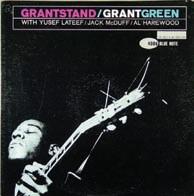

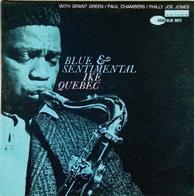
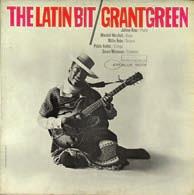
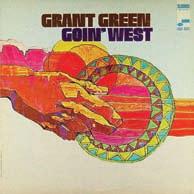

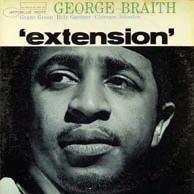
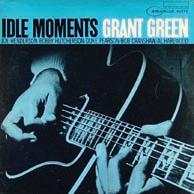
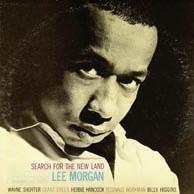

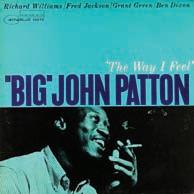


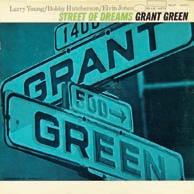

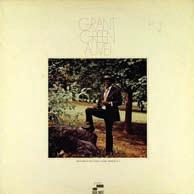
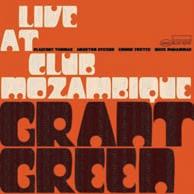

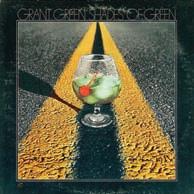




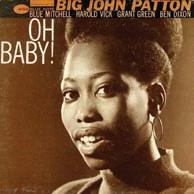
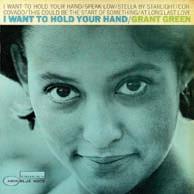


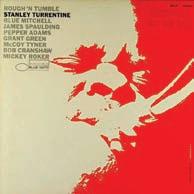

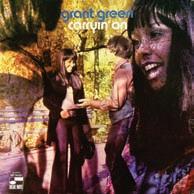
98
it cool, and then electric, and the point is you have to grow. That’s what music is supposed to do, and that’s what it used to do. Music hasn’t been doing that for probably the last ten or twenty years. Because you have record companies that when they hear a new artist that sounds a little different, the first thing they do is say, “What category can we put this in?” And there’s no room for change, which is what we do as humans.
And music should reflect that, hopefully.
Right! Hopefully. [laughs] What made those records so good back in the day is that the artists changed and the records sounded different. That’s what made it all sound so good. I blame the major labels for this. They teach the average music listener to think inside these categories, to be consumers of a product, really. And what blows my mind is that people outside of this country, in Japan or wherever, they know more about our music than we do!


Right. Like the British Invasion. White people generally didn’t hear those Black records, and it wasn’t until it was repackaged and came back to the States that White kids here got it.
Exactly.
Did Grant ever play abroad?
I know that he did do some time in Europe, and he recorded a show at Ronnie Scott’s in London with Barney Kessel and some other players.
That’s the only video of Grant Green I have ever seen.

There is actually one more video out there of my old man playing. And I know where it is. [laughs] A friend of mine has it in Cleveland. And it’s the funky era, like 1973 or ’74. Any chance that it’s going to see the light of day?

Yeah, we are going to try to get it out soon. It definitely has not been seen before. From what I heard, it was made for, like, an intermission-type thing for the movie theater. They were trying something, but it didn’t work. [laughs]
So it’s a professional film, not just some guy in the audience with a video camera.
It’s real. But the sound hasn’t been synced up to the film. So we have to bring it into the studio to make it happen.
Many jazz musicians were pretty heavy into drugs and heroin in particular, including Grant Green. Did this have any effect on his playing and career?
Well, back in those days, everybody did drugs. Seems like you wouldn’t be hip if you didn’t use drugs. Like, you couldn’t be part of the club. So yeah, he got caught up in that. I remember my grandmother and grandfather talking about it, and my granddad was an ex-cop, and he was not happy. I think it was in the mid- to late ’60s when he cleaned up.

So he was clean before his funk phase?
Exactly. At that point, he started listening to cats like James
Brown and, you know, stuff like that. And that’s what led him to the pop and funk thing. Later on, those ideas turned to smooth jazz, and it went downhill, but it started out good. How do you have an amazing player like George Benson and he’s doing “Breezin’ ”?
Well, it wasn’t supposed to happen like that. [laughs] It was supposed to have some substance to it. Also, Grover Washington did the same thing. When you look at it, things like “Breezin’ ” and all that, they were still doing the same thing, just somewhere along the line it started being called smooth jazz. But then twenty or thirty years later, it’s called acid jazz, and it was still basically the same thing.
Your father’s later albums were called commercial, but he still had the soul and funk in there. Right. The Final Comedown soundtrack is a good example of that.


There are a number of stories surrounding how Grant Green passed. Can you straighten that out for the books?
My dad passed, well, he got sick. I believe that when you do all those drugs like they were doing back in the day, it catches up to you. My dad also ate terrible food—like, he would get up in the morning and eat, like, six eggs and half a slab of bacon. Nobody knew back then it was bad for you. And so, he had a stroke [in 1978].
Did that affect his playing?
Yeah. He couldn’t play exactly like he did before, but he could still play. He was in the hospital in New York, and he took a gig at the Lighthouse in California, and he drove all the way out there, and he shouldn’t have done it. They wanted to operate on him, and the doctor didn’t want him to make the drive, but he was old school—he wasn’t having it. So he drove his Cadillac out there and drove it all the way back. He had a B-3 organ on a rented trailer that wasn’t supposed to leave California, so he was worried about that. And when he got back, he had a heart attack. He was forty-four years old.
Everyone I have talked to about your dad—Idris Muhammad, Yusef Lateef, and Elvin Jones—all have said that your dad was a great player, a humble guy, and funny as hell.
It’s true. My dad was always cracking us up, making jokes. One time, he fell down the stairs chasing our dog Satan, and even then he was joking about breaking his picking finger, which cracked us up even harder.
You had a dog named Satan?
Yes, we did. [laughs]
Well, your father is greatly missed, and we’re thankful for the music he left us. Fortunately, it lives on through you and what you are doing.
That’s right. Bernard Purdie, Reuben Wilson, and myself. The Godfathers of Groove. .
100
AllStarFunkyJazzprojectfeaturing GaryCrockett(SoundStylistics), LeighGracie(Speedometer) Snowboy &Membersof JTQ. “Thisisasgoodasanyofthe classicalbumsyouwillfindon thePrestigeorBluenotelabels”
CraigCharles,BBC6Music CD/LP/45
SNOWBOY&THELATIN SECTION-COMMUNICATION
Firstreleaseinfiveyearsfrom LegendaryAfro-CubanJazz Conguero Snowboy.Featuresan exclusivesongwrittenfor Snowboyby‘TheKingofLatin Music’ EddiePalmieri CD/LP
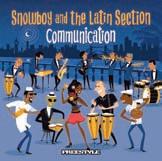


ADRIANGIBSON–STAYONTHEGROOVE4
4thintheseriesofModernFunk gemscompiledbyAdrianGibson. Features QuanticSoulOrchestra, SoundStylistics, TheNew Mastersounds, OpenSouls and manymore...

CD











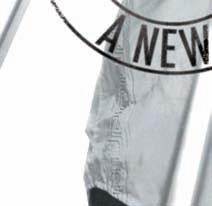


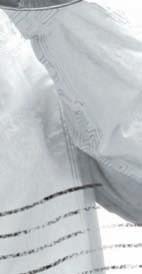




DIESLER-TRACKSON THEROCKS
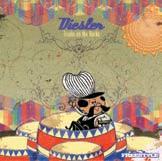






Stunningcollectionofexclusive remixesforandby Diesler Featuringtracksfrom TheCuban Brothers, TheNewMastersounds andmanymore... CD/45
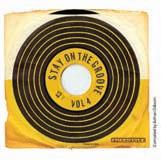
 The Pimps of Joytime “Hi Steppin Funk Fixes & REMIXES Remixes by DJ Vadim, Nickodemus, Chico Mann, SUMO, OBaH, Hi Perspective + 3 NEW exclusive tunes from one of Brooklyn’s most funky & diverse bands ofthe year!
The Pimps of Joytime “Hi Steppin Funk Fixes & REMIXES Remixes by DJ Vadim, Nickodemus, Chico Mann, SUMO, OBaH, Hi Perspective + 3 NEW exclusive tunes from one of Brooklyn’s most funky & diverse bands ofthe year!
wonderwheelrecordings.com • turntablesonthehudson.com • myspace.com/nickodemusnyc PHIL RANELIN records WIDE HIVE FEATURING: DONALD BAILEY ROGER GLENN JOSH JONES CALVIN KEYS CARL LOCKETT DAVE MATTHEWS MATT MONTGOMERY widehive.com WH-0288 JONES CARL www.freestylerecords.co.uk www.myspace.com/freestylerecordsuk THEPERCEPTIONS–INTRODUCING... PHUTUREMOTIONPRESENTA ELLADRON-CARNENEGRA 12 GYPSYBROWNLIFEISATRIP 12
Turntables on the Hudson “10 YEAR ANNIVERSARY 2X CD 10 Years of Music & Dance from NYC’s longest running outdoor party! The box set will include a CD of some hard to find songs from the first 5 years + a CD of new unreleased songs from 2008. Good feeling dancefloor Funk from around the World!
By 1975, disco pioneer Patrick Adams had left his job as a songwriter, arranger, and producer at Perception Records and was looking for a new sound—his own sound.
“I wanted to do Patrick Adams, but Patrick Adams is not a great singer,” he says. “I decided the synthesizer was going to be my voice.”
Through the Minimoog, Adams began to sing uninhibited and raw verses. He recorded a futuristic, ethereal disco cut called “Atmosphere Strut” and soon after met fellow producer and record promoter Peter Brown, who convinced Adams to release the single on a new label, P&P Records. The rest is what serious disco fans talk about when trying to convince nonbelievers of the genre’s value, an onslaught of heavy New York disco grooves from the man who would become known as “the master of the masterpiece.”

Born in 1950, Adams grew up in Harlem, New York. His story as a young artist revolves around 125th Street, where he remembers seeing Malcolm X and running into people like Muhammad Ali. He would hang out by the Apollo Theater as a teenager, trying to meet the artists who performed there. Acts like the Miracles sometimes played basketball with neighborhood kids near the back of the theater, and Adams took advantage of the opportunity to talk music.
“They would come out and play basketball with everybody. It was real cool. That was a different time,” says Adams. “But I wasn’t going there to play; I was going there to learn music. I was going to ask people like Marv Tarplin, the guitar player for the Miracles, ‘How do you do that?’ ”
On one occasion, Adams asked Smokey Robinson for some advice. “I knew he had started when he was fifteen,” Adams says. “So I asked him, ‘What advice would you give a young person who wants to be a producer?’ Smokey looked me straight in the face and said, ‘Forget it.’ I look back at that,
and I cherish it, because it was the right thing to say.”
Adams spent so much time hanging around the Apollo that Pete Long, the stage manager, and Rueben Phillips, who conducted the orchestra, gave him a job. “I guess they saw that I was not just trying to hang out to hang out, that I really had an interest in music,” says Adams. “They actually let me sit in the middle of the orchestra, like, in the middle of the saxophones. I’d sit there, or I’d hand out music. I guess you could call it, like, being the band boy.
“That got my ears accustomed to great arrangements, because you figure this week, it’s the Stax Revue—Sam & Dave and that whole crew—and next week, it’s the Supremes, and the week after that, it’s the guys from Chicago. So every week I’m sitting there absorbing the best music of the day.”
Adams had first been exposed to music in Catholic school, where he appreciated the “richness” of hymns. He never took a lesson, but his father, a merchant seaman, saw potential in his middle son and bought him a trumpet at age ten. “I don’t know what I did to let him know I liked music so much,” Adams says. “I guess I was always humming in the house or something. I guess he felt that because I was a Pisces, maybe I might be like Quincy Jones.”
After seeing the Beatles for the first time on The Ed Sullivan Show, Adams realized the trumpet wasn’t for him and asked his father for an electric guitar. “He bought me a cheap acoustic guitar,” he recalls, “and said, ‘I’m going away for three months, and when I come back, if you can show me that you learned how to play that guitar, I’ll buy you an electric.’ ”
He taught himself enough chords to convince his father, and, in three months, he had his first electric guitar. By the time he was fifteen, Adams had written hundreds of songs. “I used to write every day,” he says. “Every time I learned a new chord, I tried to find a way to incorporate it into a song.”

105
Disco futurist Patrick Adams found his voice through the keys text Mathew R. Warren photography Terry Adams
One day, a group of teenagers from the neighborhood came looking for a guitar player to audition with them for a part in a movie. “They came to me,” says Adams, “and I didn’t know any of the guys. And it was like, ‘How would you like to be in a band? And we’re going to audition for a movie tomorrow.’ ‘Sure.’ ” They learned two songs in one day and got the part as the high school band in the Warner Brothers production Up the Down Staircase. The band members named themselves the Sparks.
Around that time, there was an in-house production being put together at the Apollo called “Listen, My Brother,” for which the Sparks became the backup band. The show had a cast of local teenagers that included a young Luther Vandross. It was performed four times over the summer of 1967, and the cast was featured on Sesame Street, where they performed one of Adams’s songs, “You’ve Got to Learn Something.”
“Here I am seventeen,” he remembers, “and I’ve got a song on an international show; it’s a great start.”
Signed to MGM, the Sparks had no hits but toured through the late ’60s, opening for some big acts. “It was like a dream come true. Here we are one week with the Commodores, one week with the Young Rascals, the Temptations. We were on the bottom rung of the show, but we were there, and it was everything you could imagine it would be when you’re seventeen, eighteen years old,” says Adams.
He remembers being mesmerized, peeking in on George Kerr producing an O’Jays session when the Sparks went to record at Broadway Studios. Adams had always been fascinated by recording techniques. “When I was five years old, my father had a reel-to-reel tape recorder, and my older brother Gus had a singing group,” he recalls. “They would come over to the house, and they’d record themselves singing. When I was fourteen, I got my father to buy me a reel-to-reel tape recorder with sound-on-sound [overdubbing], and my younger brother Terry and I, he would play bass and drums, and I would play guitar, and we would do sound-on-sound recordings. That gave me a chance to experiment with all these things.”
Adams’s initial studio experience came at sixteen, when he began working at Avant Productions, run by Al Avant on 125th Street. Avant had let Adams teach himself piano in the rehearsal studio and, in turn, asked Adams to rehearse artists. There, he learned to engineer sessions and got his first chance to write and arrange with a group called the Carlettes. They recorded one of Adams’s songs called “Lost Without Your Love,” which was later put out by Bobby Robinson and is now a goodie for rare-soul collectors.
In 1968, Adams was told by a friend to check out a talented young singer from the neighborhood named Leroy Burgess. “I knew he was a star when I saw him,” says Adams of the then sixteen-year-old Burgess. Feeling like there were no good New
York falsetto groups, he put together the group Black Ivory with Burgess and some other local teens. As backup, they used a funk band from the projects called the Soul Severes, whose recording “I Got It” was reissued by Kay-Dee Records.
“So we had an organization at this point, where you had three vocalists, young, like, seventeen years old,” says Adams. “The band was between seventeen and nineteen years old, and there were, like, seven guys in the band. It was one big family.” The group began touring, performing alongside acts like Kool and the Gang, who would also sometimes play backup for the group. Adams recorded Black Ivory at his own expense and went to Perception Records to see if they would sign the group. While in the lobby at Perception, he overheard that the label needed an arranger for a Welch’s Grape commercial.
“When I heard the words ‘arranger, television commercial,’ I thought, ‘I can do that,’ ” says Adams. “I had never done strings at that time, but I said, ‘I can do that; I’m an arranger.’ That’s a really gutsy move when you’re nineteen years old.”
After a crash course in arranging strings, he pulled off a successful session. Adams’s jingle got Perception more advertising work and landed him a job at the label. Through Adams, Black Ivory got a deal, and they continued to work together, recording two albums on Perception’s subsidiary, Today Records. Adams wrote, arranged, and produced music for a slew of other artists at Perception, including J. J. Barnes, Debbie Taylor, and Astrud Gilberto.
But after a dispute over Black Ivory’s contract, Adams left the label in 1974. In spite of his new position as vice president of A&R, Adams sided with the artists who had brought him to Perception in the first place.
He was out of work and in search of a new creative outlet for his music. Adams had already experimented with synthesizers, using them at first to replace the French horns on Black Ivory records. Then, influenced by Stevie Wonder, he used the instrument more and more. By the time he began working independently, Adams had decided the Minimoog synthesizer would be his main musical tool. “I could express what I wanted to express through the Minimoog,” he says.

In the summer of ’75, Adams wanted to record a dance record that reflected the changing sounds of the day. “Music was going through this transformation, it was heading towards disco, but it hadn’t really gotten there yet,” he says.
“Disco, at that point, was an extension of R&B; it wasn’t the garbage that it became later.”
Adams remembers vividly the first time he heard disco in a club. “The first record I experienced was ‘Love to Love You Baby’ by Donna Summers,” says Adams of the night when, at twenty-four, his girlfriend took him to a gay disco. “That night opened my ears and body to disco on an emotional level. It was shortly after that I started the Cloud One and
106
Bumble Bee [Unlimited] and Universal Robot stuff. It really helped me to focus on the importance of emotion to the dance experience.”
With Sparks bandmate John Cooksey keeping a hustlestyle two-step on drums, Adams began laying down riffs and improvising with the Minimoog in the studio. “Once I had decided on the concept of Cloud One and ‘Atmosphere Strut,’ it seemed logical to go out on a limb,” he says of his synthesizer explorations on the now classic cut. “I was trying to get the most out of the instrument. I was experimenting.”
He brought a group of friends into the studio, that included Sylvia Striplin, to sing the chorus, “We’re gonna fly, fly away,” and to add crowd elements to parts of the song. The project was a form of release for Adams. “ ‘Atmosphere Strut’ was my opportunity to be my other self,” he says.

A few months later, in the fall of ’75, Adams was introduced to Peter Brown, who was starting an independent disco and funk label called P&P Records, the other “P” for his wife Patricia Brown. Brown heard “Atmosphere Strut” and asked Adams to release it as one of the label’s first singles.


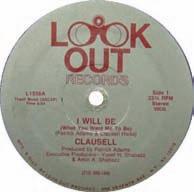

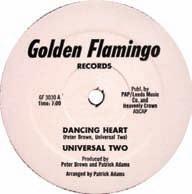
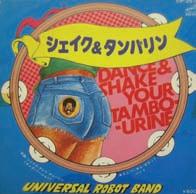
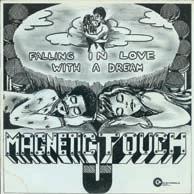
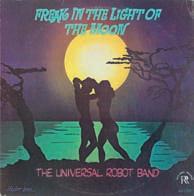
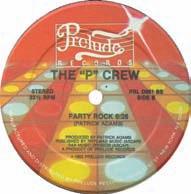



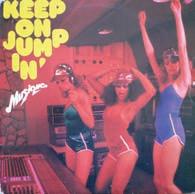
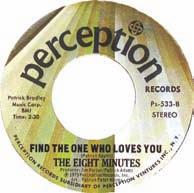

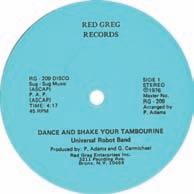

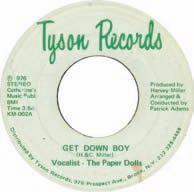


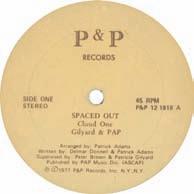

“Peter says to me, ‘I have all the connections you don’t have, I’m very tight with all the programmers up and down the East Coast, I do record promotion for people, and I can press x amount of records,’ ” remembers Adams. “I wasn’t in great financial shape, because I hadn’t worked in a year, and, out of frustration, I said sure. So he put out ‘Atmosphere Strut.’ ”
Frankie Crocker, a radio personality and DJ broke the record in New York. “Frankie Crocker, God bless his soul, was one of those great music people with vision. He was the first person to play a lot of hit records,” says Adams. Club DJs were soon spinning the single throughout the Northeast, and Brown suggested Adams do a Cloud One album.
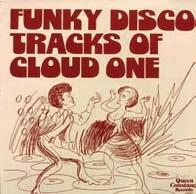
Adams repeated the process that had originally created “At-
mosphere Strut,” this time using a new drummer, Richie Taninbaum, and a group of background singers. Over a weekend, they recorded five more songs for a Cloud One LP that would be titled for its hit single.

Adams knew he had found a home at P&P, a place where he could do his thing and ideas flowed freely. “I recognized from that point on, after ‘Atmosphere Strut,’ that P&P would always be, like, my personal playground,” he said. “P&P Records became sort of the catch basin for talented people who had concepts that they wanted to try. We never told anybody on P&P what they could or couldn’t do, what they should or shouldn’t do. It was like, ‘Go for it, if you want to bang pots and pans together, that’s your sound.’ ”
After Cloud One, Adams established a slew of musical identities to showcase his synthesizer virtuoso. The first was the Universal Robot Band, launched by the soulful party track “Dance and Shake Your Tambourine.” Adams’s next project would add a new buzz to his repertoire of strange personas. “I’m listening to Alvin and the Chipmunks, and I don’t know where the concept of the bumblebees came from, but I guess I was looking once again for a way to have a voice without having a voice, because if you’re doing bumblebees, you don’t have to be that great. That’s how I did ‘Love Bug’ and [other tracks as] Bumble Bee Unlimited.”
He continued to experiment at P&P, while taking on work producing and arranging for major labels, such as Atlantic Records. “On P&P Records, I would never do the same things I would do on Atlantic. That’s one of the reasons why I established separate identities,” he says. “P&P became this place where artists could be free, as opposed to an Atlantic Records or a Columbia Records, where everything is high spit and polished.”
Adams appreciates the attention his independent work at
108
P&P has garnered and is pleased by the acclaim it has brought him. He is especially fond of one review of “Atmosphere Strut” that compared his synthesizer innovations to Miles Davis’s trumpet work. But in today’s world of Internet snark, even Adams can’t escape an occasional critic. “I was reading somewhere on the Internet,” says Adams, “where somebody was saying that Patrick Adams’s synthesizer work was wonderful, and this and that, and then somebody leaves a comment, ‘Patrick Adams isn’t all that great; I hear a lot of mistakes in his playing.’ My response to that would be, ‘Yeah, that’s true, I’m not trying to be perfect on Cloud One records or Universal Robot records; I’m just having fun.’ ”
Making experimental disco music was fun, but participating in the disco scene was less appealing to Adams, who wasn’t interested in the clubbing. “I’ve never had a peacock mentality of ‘Hey, everybody look at me, I’m dancing,’ ” Adams says. “Mentally, I’m dancing all day long.”
Throughout the late ’70s, the disco in Adams’s mind made its way onto the dance floors and across radio waves. But his biggest disco hit, “In the Bush” by Musique, would prove too risqué for some radio stations. Prelude Records had hired Adams to produce the female disco group, and, to his and the label’s surprise, the album cut—never intended to be a single, with its chorus chant of “push, push in the bush”—became a hit. The song was subsequently banned on six hundred radio stations across America for its suggestive lyrics.



“I guess, in some small way, I’m guilty for pushing the linguistic line of censorship,” says Adams. “Here in the twenty-first century, I’m not even sure there are any dirty words anymore.”



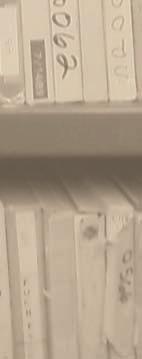


Another, less controversial hit Adams had was with Inner Life’s 1979 single, “I’m Caught Up (In a One Night Love Affair)” on Salsoul Records. “I will always think of ‘Caught

Up’ as a high point in production for me,” says Adams of the disco anthem. “There are moments when everything just comes together right.”
As the ’80s came and disco died out, Adams looked to stay busy and on top of new sounds and recording technology. He took a job engineering sessions at Power Play Studios, where he worked with countless hip-hop legends including Eric B. & Rakim, Salt-N-Pepa, Marley Marl, Mister Magic, KRSOne, and Nice & Smooth. In the studio, Adams played the role of mentor, teaching his recording techniques and encouraging the young artists to produce themselves. Adams is especially proud of his engineering work on Paid in Full, which he considers one of the greatest rap albums of all time.




Throughout the ’80s and ’90s, Adams continued writing, arranging, and producing his own music. In 1991, a remake of “Touch Me (All Night Long),” a song he wrote with longtime friend and musical partner Greg Carmichael, became a number one hit single.
Today, Adams’s music is still being covered and sampled. He received a platinum plaque when Nas sampled Black Ivory’s “We Made It” for the song “Revolutionary Warfare” on the 2002 album God’s Son. A recent remake of Musique’s “Keep on Jumpin’ ” that has a video featuring scantily dressed female soccer players has become a YouTube sensation.

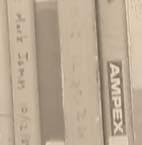
With over forty years in the music business, Adams is not humble about his achievements, nor should he be. He has had hundreds of his songs recorded, and worked on hundreds of records more. With his music now being reissued and appreciated by fans beyond the disco fanatics, Adams is beginning to receive the recognition he knows he deserves.
“Very few people on this earth can do what I can do,” Adams says. “I will never claim to be the best, but I know that I am among the best.” .

www.bigdada.com www.rootsmanuva.co.uk Root� Manu�� S�ime & Reaso� ‘Londo�� �yrica� geniu�... goe� �a� �eyon� UK �i�-�o� int� other �ealm� �a� n� one else i� comin� close � explorin�’ FADER The new album out September 2008 LT D 2C D | C D 2LP | D OWNLOAD
110
EUROPE’S FINEST DISTRIBUTOR OF PHYSICAL & DIGITAL SOUL, FUNK, JAZZ, BEATS, HIP HOP ETC.



























Recent and forthcoming from our top Labels










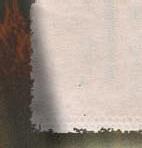












Other labels distributed include Daptone, MPM, Soundway, Timmion, Tramp, Truth & Soul, Soul Clap, Above the Clouds, Dynamite Soul, Scorpio Sounds and many more....
www.boomboxdistribution.net for sales sheets, soundclips, full catalogue, label focuses, classics and more..

FRESH OUT THE BACKWOODZ!!!

Invizzibl Men


















Vordul Mega TheUnveiling
From the grimy production to the mean-mugging raps, everything on their debut, , is executed almost perfectly... if Karniege and MarQ Spekt can maintain this album’s flashes of brilliance for their next record, I fear for the future of other emcees. -PopMatters.com / The appropriately named debut of Invizzibl Men is an atmospheric chamber of digital wash and booming bass drums, rooted firmly in the left side of the centre.

-RapReviews.com / Their debut release, The Unveiling, is a Def-Jukie style return to east coast hip-hop...a great hip-hop record with great guests. -Urb Magazine / From the very beginning The Unveiling reveals itself as a gallery where two lyricists practice the art at its highest levels...The resulting album is one of the best this year. -COOL’EH Magazine / ...Hard, dark boom-bap, deceptively minimal in its beats but filled with barrages of images and styles.
-Prefixmag.com / A full album without filler... I know it’s a cliche to call a new album “classic”, but we called albums “classic” not for the now, but for the future. This will











proves that Mega has hit on an idea that’s as good now as it was in 2001: Call it end-of-the-world movie-score rap. -Washington City Paper / ...Destined to be a mega-success in the underground hiphop world. -Urb Magazine / ...Almost every track has first-rate produc- tion and strong, precise punch lines. -Creative Loafing / Anyone who has ever wanted to hear an album where the momentum never lets up will have to hear this. -The Run-Off Groove / The album eclipses his The Revolution of Yung Havoks, with tracks such as “Trigganomics” and “Opium Scripts,” which boast menacing, cinematic imagery. -The Miami New Times / ...retains some of the Cannibal Ox sound while adding a little more soul... should have heads salivating for a new Cannibal Ox album.







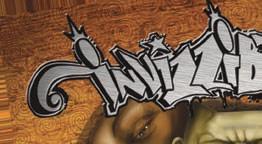








-Peoria Times Observer IN













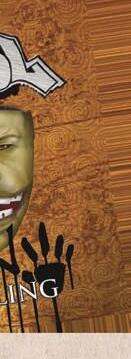


















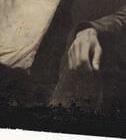




Ubiquity.pdf 9/27/08 9:41:10 PM
DIGITAL MUSIC AGE Uncle Funkenstein Together Again Jazzman CD/LP/MP3 Black Milk Tronic Fatbeats CD/LP Lingua Franca The EP Breakin Bread EP/MP3 Funkshone Shining Skyline CD/LP The P Brothers The Gas Heavy Bronx CD/LP Ill Bill The Hour Of Reprisal Fatbeats CD/LP Megagraphitti
MAKING IT WORK IN THE
STORES NOW! www.backwoodzstudioz.com
A revealing look into the mind of MF DOOM text Andrew

 Mason
Mason
You like movies? Name a few of your favorite screenwriters. If you’re grasping for names, you’ll appreciate that the talent for putting memorable words in the mouths of fictional characters is an under-acknowledged art form. These often unknown but prolific prose artists rarely emerge from the shadows of their famous creations. Welcome to the world of Daniel Dumile, whose youthful nickname of “Doom,” a phonetic abbreviation of his last name, has come to describe one of the most mysterious, misunderstood, and masterful rap artists of the last twenty years.
DOOM, as his moniker is officially written, is the latest and perhaps definitive manifestation of a multifaceted, maskfaced rapper and producer, whose previous aliases have included Viktor Vaughn, King Geedorah, Metal Fingers, and, originally, Zev Love X.
“I first met DOOM in 1989 on the set of ‘The Gas Face’ video,” remembers Bobbito Garcia, who would later play an important role in Dumile’s career. “The Gas Face” by 3rd Bass was the first appearance on wax for Dumile and his brother, Dingilizwe, aka Subroc. Along with third member Onyx, they formed KMD, and, with the group’s 1991 debut on Elektra, Mr. Hood, they became part of the last blooming of the golden era of hip-hop.
The following years saw the group’s once bright fortunes turn drastically. In 1993, Subroc was hit by a car and killed. Taking a page from KRS-One and his reaction to Scott La Rock’s untimely death, DOOM completed their sophomore album and submitted it to the label.
In the early ’90s, the influence of the Parents Music Resource Center—the PMRC, the group responsible for introducing parental-advisory labeling on music product—and the controversy surrounding “Cop Killer,” the incendiary song released on Sire/Warner Bros. by Ice-T’s group Body Count, shook parent company Time Warner. When KMD’s satiric album title, Black Bastards, and DOOM’s cover art, a “Little Black Sambo” caricature hanging from a noose, drew the attention of Billboard magazine’s “Hot Rap Singles” chart manager Terri Rossi, things came to a boil. In a vitriolic essay, Rossi managed to invert the group’s pro-Black concept and find KMD and their label guilty of bigotry. Elektra dropped them like a hot bean pie, and Dumile soon found himself near homeless and broke on the streets of New York. Creativity often blossoms in hard times, and, in these dark days, Dumile began creating a scheme that would eventually bring him worldwide attention. But first he had to get heard. On the advice of his old friend Jorge Alvarez,
Photograph by Cara Pastore.
who had recorded as Kurious in the KMD days, Dumile contacted their old manager Bobbito Garcia and played him some music. “I had managed KMD, briefly, in 1993,” Garcia reveals. “I just tried getting them shows. It wasn’t like I was up at Elektra screaming on people.” When Garcia heard the MF DOOM tapes in 1997, he quickly came to a verbal agreement to release the material on his completely collaborative Fondle ’Em label, on which artists received a straight fifty percent of profits and kept their masters.
“DOOM and I put out four 12-inches together,” says Garcia, “and it culminated in the release of [Operation:] Doomsday, which, for the ’90s indie era, was conceivably a top five album on anybody’s chart, along with the Company Flow and the Juggaknots LPs. I had never done any type of artwork on any release, but I felt like Doomsday deserved it. So I got Lord Scotch, aka KEO, an old-school graffiti writer, to do graphics.
“All the stuff that was on Doomsday was very rough,” Garcia continues. “No forty-eight-track, no digitally mastered, none of that. DOOM gave me songs; I just put them out. It was that simple. I think three thousand copies were initially pressed [of Doomsday], which, for an indie album, was great. We had no radio, no press, no nothing.”
Since then, Dumile has ridden a much-deserved renaissance, becoming a prolific rapper and producer, known as much for his baroque, interlocking rhymes as for his sturdy beats. His numerous aliases and frequent forays with identity-obscuring collaborators like Madlib, Danger Mouse, and Ghostface have provided ample fodder for fans, as well as a burgeoning discography.
I spoke to him as he was in his studio finishing his latest solo release, Born into This.
You’re almost done with your new DOOM album. How do you know when you are finished working on something?
That’s a good question. I know when I’m done on the business side of it when someone checks in with me: “Is it done yet?” But it’s really never done. I turn in a version of it. The thing is, the music is always evolving.
If I have to answer that question with a straight answer, it’s when it feels like, “Okay, I got to let someone else hear it now. It’s just sounding too crazy.” It starts to bubble out, almost like a baby bird being hatched, and then it turns to a fledgling. And then it gets out and leaves the nest.
Do you have people you can play stuff for, or is it you in the lab, and that’s it?
It’s me in the lab, pretty much. My engineer, Morgan Garcia, I got to shout him out. He is my other adult ears. Other than that, it’s my kids, my wife.
How do your kids influence you in terms of making
music? Do they put you up on things they’re listening to?
That’s another good question. I got a son who’s in high school, I got a son who’s just going into kindergarten, and a daughter who’s just learning to walk. I get a wide range of reactions to gauge. They are always involved in it at some level, whether it’s my daughter—’cause if she’s going to sleep, there’s only certain kinds of music that I can play that will keep her calm. My son is the second in succession going up in age, five years old, and he loves music. When I’m programming, he’s always coming in the room; he wants to do my album. It’s to the point where I have to make him my assistant. So really, he’s my second set of ears, and he listens to it as it’s being made and sees the process. And I’ll just look over at him and gauge his reactions. Certain things, he’ll be like, “Turn it off, that’s wack.” And I’ll be like, “What do you know about ‘wack’?” I use the terminology without really hearing myself, and he’ll tap into it.
Then my oldest son, he’s in the eleventh grade. He was born around the time of Black Bastards. He’s been with me through the whole thing, seen all the records. He’s more laid-back; he’s not so up-front musically. He more draws and paints and stuff like that. But he enjoys music. Sometimes, I check his iPod out to see what he’s fucking with.
Between all three of the ages, that’s like my gauge, really, as well as my own ear.
When you’re not listening to your own stuff, what kind of music are you checking out?
To tell you the truth, I be immersed in making this shit, making my music. But making music entails listening to music. So you have to have a really good source of music to be inspired to make music. The direction I’m taking this DOOM stuff right now—and forever—is fueled by artists that came before us, something that definitely was changing part of the game.
My fuel is more like things that are reminiscent of my youth, like ’70s stuff, funk stuff. I look at what the year was, and then the shit might be right near my birthday or right near the time when my brother was born. It’s a time when you can remember what it felt like. If you listen to a record from back then, it still takes you right back. If I want to go to ’83, I’ll put on some Bambaataa shit. If I want to go to ’71, Gil Scott-Heron and those dudes back then. Really, for me, there’s no more after 1993. It seems like it all turns into pop or bubblegum shit. The last couple records I remember listening to before that was De La’s 3 Feet High and Rising and all that, Nas’s Illmatic kinda shit… If I went a little bit into more detail with that kind of feel—Gang Starr, Primo, and them. But around then, it seems like mass production turned into something else, on the mainstream tip. You had to go a little deeper to find anything. Bobbito with the Cenubites album,
and Wu-Tang, they were breaking barriers, but I can’t really remember anything after that.


You’ve been in it for so long. Do you still have a passion for making music and being in the game?
Yeah, I would say about twenty years, professionally. It’s crazy how twenty years can pass like that! As far as passion for the game, there’s times when I don’t even feel like fucking with this music shit. I’ll leave my equipment alone for months. Mainly because there’s something going on, you know, regular-life shit. But it’s eternal. Something will trigger me to go back and hear something. I’ll go hear it, and it’ll open the Pandora’s box. Then I’m in it for another six months straight.
It’s something like breathing, like inhaling and exhaling. Time between pauses—while you’re inhaling, it’s like absorbing; exhaling is like putting shit out. It’s a process: you’ll have hiatuses, and then it all hits like, “Pow.” Plus, those [in between] times is like gathering info; the mind gets a chance to absorb things to express. People expect you to be expressing all the time, but life just don’t work like that. It’s like an inhaling and exhaling kind of thing. Everything breathes like that.
Is it frustrating to fit that life pattern into how the indus-
try wants you to be? They want you to stay on a schedule, they want you to be in this type of persona… I don’t really let it bother me. I look at it like this—them cats need us to make dough. If they come up to a nigga who make music that’s the only person who can make that music, that’s why they came up to that nigga to make the music. Anytime anybody complain, or are maybe rushing [me], I look at it like they just don’t know how the process works. To them, it must look like it’s some kind of magic. Why else would they be paying you to do something that we do naturally and so free-flowing? I almost don’t wanna sell it; I wanna give it away. But we in America: we gotta eat, so I’ll sell it.
I’m wondering about the persona of DOOM as an entertainer or a performer, the mask and everything. Is that literally a way for you to put on your game face, to get in the zone for performing?
This is the fun part of the approach of the DOOM stuff. I’m not the dude at all, I am writing about a character. It’s a little bit based on my personality, but it’s definitely exaggerated. You know, if you gonna have a character, make him into his character. I made him into a super MC/supervillain The MC side ain’t nothing but rhyming. I can do that all day. That part is super already.
116
(left) KMD circa 1990. Photograph by Ernie Paniccioli. (right) KMD for their 1991 release Mr. Hood Photograph by Arthur Cohen.
There’s a whole bragging and boasting aspect to rhyming, like Busy Bee and all them. It’s really just talking shit. I look at it like, “Wow, who can be the most talk-shit nigga now?”
I kept that aspect—I feel like it’s naturally in rhyming—and exaggerated it, made it into the illest dude, bragging about the illest shit. When you make a character, you can have the character be able to do or be able to say anything. A lot of artists do that for real, they have their name on it, and the bragging and the boasting pull a nigga in it for real. Now they have the mask of their own face on all day, every day, and have to keep that persona—you can never really grow out of it or change.
It starts getting weird. What would you trade for your own life experiences? How much money? Can they buy you? Could anybody buy you? Is your price a certain thing? I like to separate my situation—my home life and family life. I draw inspiration from it. But the people I know in the neighborhood don’t even know what I do. I’m just a dude who lives right there, or the dude down the street that comes into the store. I need my life. I’m not trying to change my life for this rap shit, for real. Definitely not. Come on, not when you can do both. I enjoy music, make music, I make money with this music, live off music, share music, but you still need to have your life.
People expect certain shit. That’s something you have to kinda consider in this entertainment field. You probably don’t realize it at first. When we first got into it, with KMD, that’s who we was, straight up. But then after that shit was over with, and KMD had no deal no more, and we’re walking the streets of Manhattan, it turns into a lot of pressure. So I figured out a way where, all right, this time, I’m doing it, but it’s going to be done like how they do it in the movies. They’ll have a character in it, but the character is spawned from imagination. As wild as it may be, if you’re a writer, you can go there and make it real.
I like to stick to the writing aspect of it and write these scripts, these screenplays. The character can do anything. Regular MCs can’t really do that. It’s, like, limitational. Them niggas good in their own right, but I’m just coming at it from a different angle.
The funny thing is, many people, from fans to press, et cetera, seem to have bought the story to the point where they forget you’re not actually a supervillain. Oh yeah. They gotta remember, it’s a character. Characters do all that shit. The thing is, they’re speaking to me like they’re speaking to the character, but that’s not necessarily the case.
It’s almost like Stephen Colbert. This is a new example that I happened to come across. I used to watch that shit, and it damn near pissed me off, like, “How the fuck he gonna say that?” But he was in character. After I found out—I think I must have read an interview or seen him somewhere—I
was like, “Oh, the nigga in character. Damn, that shit’s ill.” I think I may have seen him speaking about it, about himself, and his home life. Something where I was like, “Cool, I’m not the only one doing this.” For people who are attracted to hip-hop music, it’s our job to spark their thoughts, to make them say, “What the fuck is he saying that for? Why’s he doing that?” Then, when they find out it’s just a character, it’s a mind-opening thing.
Plus, it’s like, damn, the temptation to just fuck with people’s heads like that, I just can’t resist. It just goes to show, a lot of people need to be snapped out of it.
How much of the talk on the Internet are you aware of? People really get caught up in the DOOM character.
That’s crazy, B. That’s good. I guess the character is a success. There are claims of imposter DOOMs wearing the mask and doing shows for you.

That’s interesting. I’ll say this: I’ve been rhyming on the microphone professionally for twenty years, out there when [Big Daddy] Kane was there. [I] was doing big-ass stadiums when Pac was in the Digital Underground—Latifah, 3rd Bass, De La, KMD. On the microphone, for hours every night, busting my ass since I was, like, eighteen. It never ended. If it wasn’t the stage, it was on the street, battling or whatever in the ’90s when there was no deals. And I’m still doin’ it, to the point where now I’m thirty-seven.
Last year, I did some show, wrecked it, girls climbing up onstage and shit—that was the first time that happened—but we was rocking, right? Somebody from the label was going to be there. I was like, “Cool, he saw the show, and it was wrecked.” Next couple days, I speak to him, and he was like, “Good show, but a lot of people are saying it wasn’t you!” I’m like, “All right, every show I do, motherfuckers start saying that: ‘Was it really him?’ ” I lost fifty-nine pounds last year on some healthy shit, and I’m out there busting my ass, and niggas is still saying that shit? Niggas is caught up in the character part. But—I will say this: you never know what to expect. I’ll fuck around and do some shit like that, just to fuck around with a nigga head.
’Cause I’m like this: it’s music; I’m doing the shows; the stage is my canvas; I’ll put whatever up there for the visible eye. But it’s music, for listening to. Looking at it has nothing to do with what it sounds like. A blind person could be at the show and feel it clearly, but don’t see nothing of it. Don’t matter what the shit look like. Look, was niggas rockin’ or was niggas rockin’? See, I’m snapping niggas out of it. I might change my mind and want to retire from that part. I’m not sweating my ass out onstage no more. I’ve spit hundreds of thousands of lyrics, time and time again. Maybe I’ll take a break, or maybe never come back. That’s my choosing as an artist. And it’s their choosing to criticize it too. But that’s my other job—to snap niggas out of it. .
Photograph by B+.
What do you use to make beats? Are you still messing with the MPC?
Well, I got a bunch of different shit. I like the [Boss SP-]404. The 404 is a nice, flexible machine.
Is that that one that Madlib uses a lot?

The 303 is what he was fucking with on the Madvillain shit. He put me up on it—the way it felt, and the way you can chop shit up and change it with the twist of a finger, without having to go too much into the parameters. You’re spending more time typing on some sequencing samplers than you are actually doing music. The 303 gives that hands-on feel, and, I guess, the 404 is the big brother to that one. They updated it, put some more stuff on it. It has the battery capacity, and that’s what I like. I can go anywhere. I could be in the middle of the woods somewhere. On the new record, there’s no one sequencer or one sampler that did everything, and there’s other producers on it too. But I used the 404 and the [Akai] MPC1000 with the JJ OS in it—that’s what makes the machine as versatile as I need it to be.



Wait, what’s the JJ OS?
Well, from what I read, it’s these Japanese cats that started writing new operating systems for the MPCs. They made it so you could do certain things that you could only do on the 2000 before. Now you can do it on the 1000, like multilayering stuff or stacking sounds. You couldn’t do that with the original OS from Akai. Putting them snares together, so it just pops. That’s a must-know trick. I don’t even feel bad giving that out for free! I consider myself a drummer, if anything, out of all the instruments. Drums are the centerpiece of the whole song.
Are you keeping the quantize function on when you program?
It depends on the beat that I’m doing. Most of the time on a regular loop, I turn the quantize off. Most of the time, I don’t even use the sequencer part at all. It gives a more hands-on feel to it when you listen back. You know, when you’re doing
a beat, and you first loop it—you hit the sample, and then you ain’t looping it. You just hitting it. But you hit it a little different every time you hit it When you capture that, that’s like a snapshot of the most rawest, your livest session right there.
Once you have the computer loop it, then you record it; now you’re going coproducer with the computer. It’s like, did you really do the beat then? It’s all right looping some shit, but at least put the swing to it. That’s how I feel—I just feel a little guilty sometimes using too much of the computer. Sometimes, it’s good though, for certain things.
But, really, I just do everything freehand or in Pro Tools now. Chop it up. In Pro Tools, you can loop shit. It took me a while to be able to do that, though. Pro Tools is kind of like a different language than how we do it. We do it by hand, without looking. Now there’s the visual aspect and not too much the hitting of a pad. It took me a while to translate myself to it. But it’s like a combination of those two. Pro Tools is something you can use to quickly execute certain aspects of the song, but then still I go in there and hit the drums live from the MPC, the stacking thing, without using the sequencer at all, or the quantize or nothing.
The computer makes it way easier. I can put something down for a few years, go back to it and listen to it, doublecheck it. Most of the time, I’ll do it, listen to it then, and then put it away, for, like, a year. Then I gotta go back to it. Everything has, like, a year gap there, or, like, a year latency. By the time it gets to the people, it’s two years of studying it and making sure it’s right. Going back to it, putting it away, coming back. Most of the time, I won’t touch it up again. Most things survive the journey. But then, there are those that just might need a little more; so, all right, I’ll put some drums to that. By the time it gets to the people, it’s all the most rawest shit.
You have vaults of stuff you could go back to? A lot of unreleased joints?




There’s definitely an unlimited supply. [laughs] .

120
Photograph by Cara Pastore.
DOOM on Beats





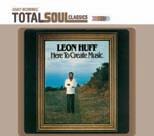
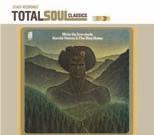
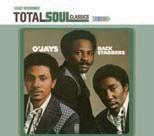
















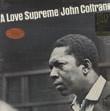



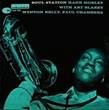

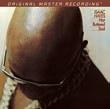

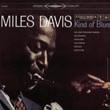









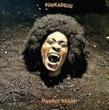

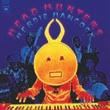


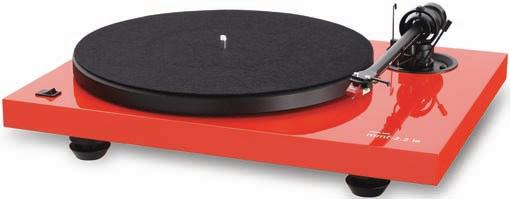






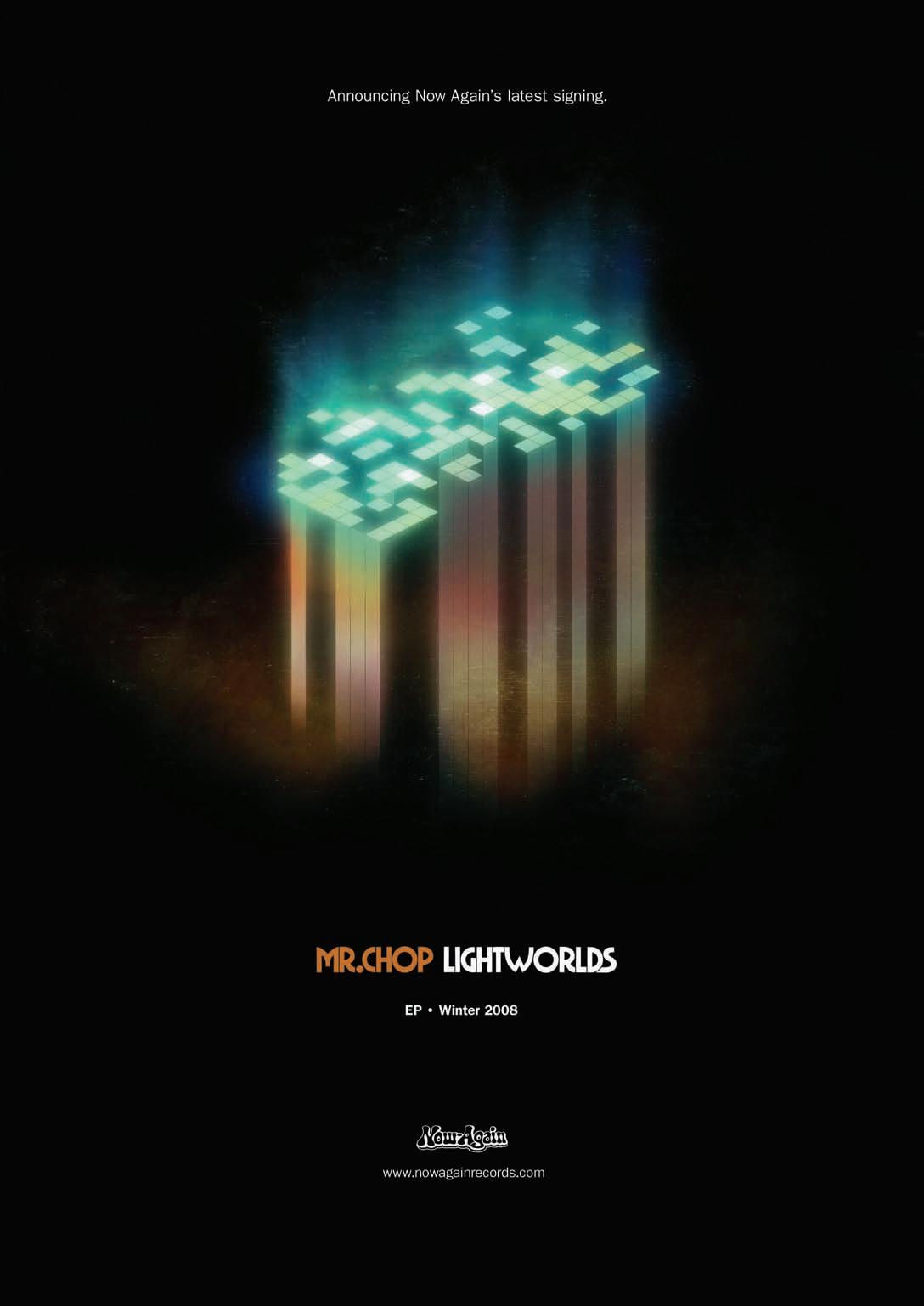


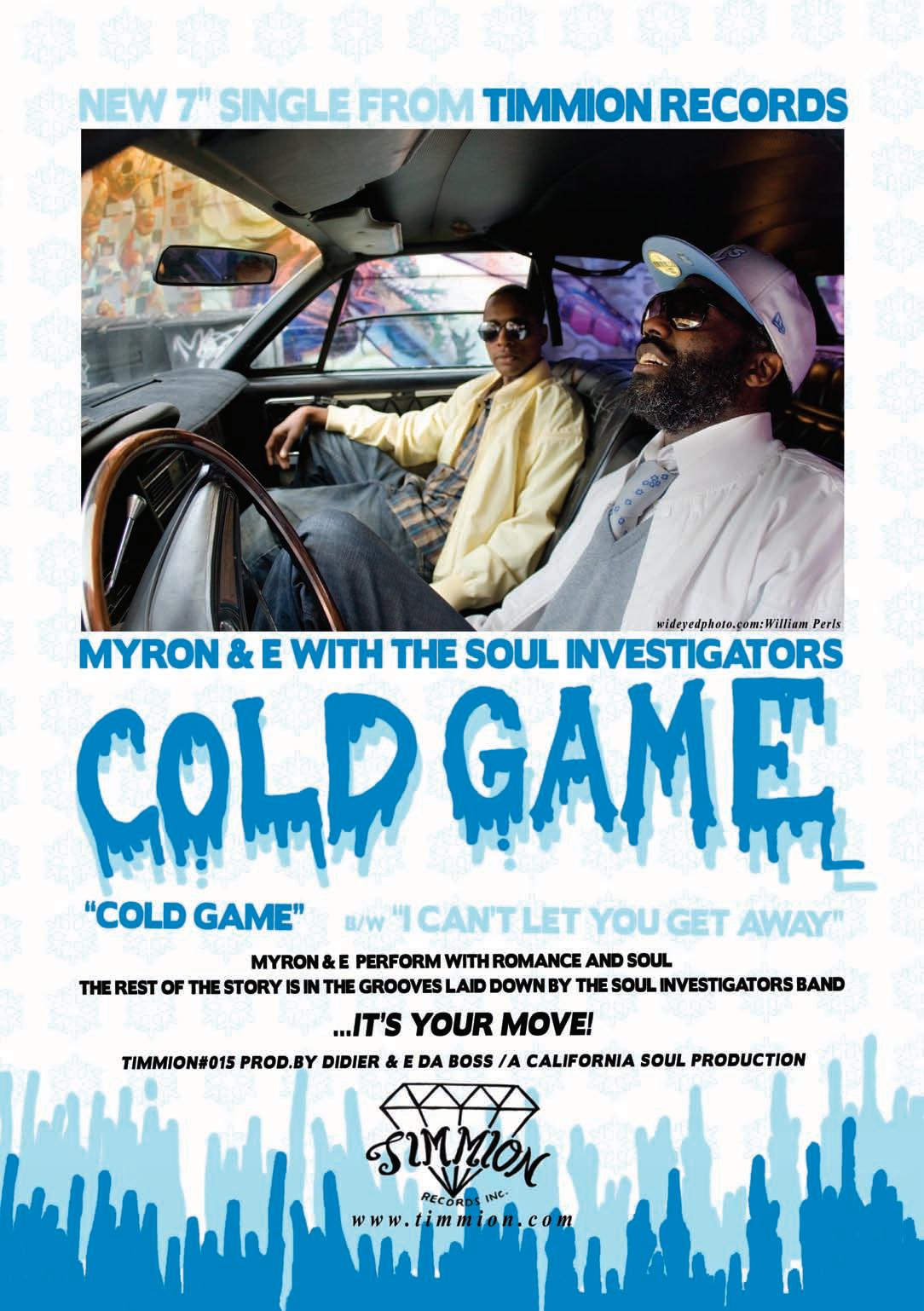










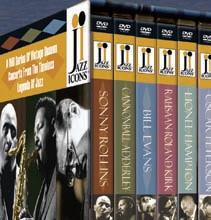









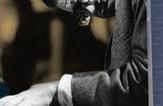





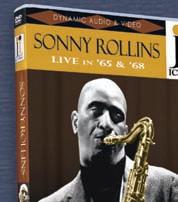

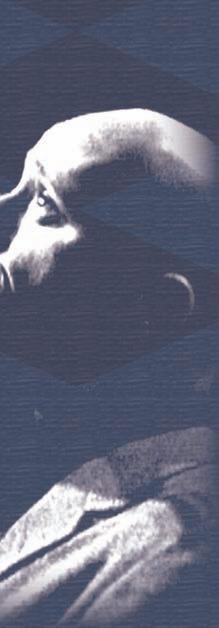
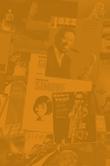
























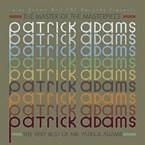

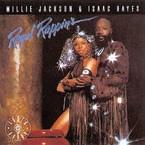



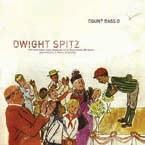




 Ravinder Binning
Ravinder Binning




 . Maxwell Schnurer
. Maxwell Schnurer



















 photography Michael Ochs Archive/Getty Images
photography Michael Ochs Archive/Getty Images




















































































































































































































































































 The Pimps of Joytime “Hi Steppin Funk Fixes & REMIXES Remixes by DJ Vadim, Nickodemus, Chico Mann, SUMO, OBaH, Hi Perspective + 3 NEW exclusive tunes from one of Brooklyn’s most funky & diverse bands ofthe year!
The Pimps of Joytime “Hi Steppin Funk Fixes & REMIXES Remixes by DJ Vadim, Nickodemus, Chico Mann, SUMO, OBaH, Hi Perspective + 3 NEW exclusive tunes from one of Brooklyn’s most funky & diverse bands ofthe year!





















































































































 Mason
Mason













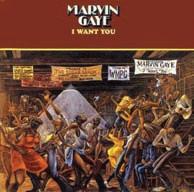


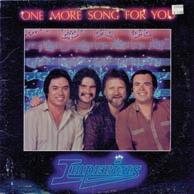
 text Corey Bloom photo courtesy of Count Bass D
text Corey Bloom photo courtesy of Count Bass D




